

Culture Couture pg.48
By. Sukhman Sahota
By. Kiana Kalahele
 By. Brian Guevara
By. Brian Guevara

table of Contents The Votes AREN’T In Business is Blooming in OC Is Chapman’s Political Pulse Dying?
RateMyProfessors: A 1-Star Way to Choose Classes?
Freshman
or
Is
Makenna
Worrying About the Wrong First Class By. Marjorie Stemmler 06 10 16 22 26 30 Study Abroad Students Find Problems in Choosing Courses pg. 10 pg. 26
15: Fact
Fiction? By. Sarah Hart Your Order
(Finally) Ready By.
Kunimura
 By. Nicole Kavros
By. Sophie Wehrlie
By. Allie Leichter
By. Nicole Kavros
By. Sophie Wehrlie
By. Allie Leichter

Get in Line: Chapman Catching a New Dance Fever
Breach the Peace
Kubiak is Trying to Keep the Party Going
Emma
Culture Couture A New Beginning - Chapman Culture Clubs Strive for Acceptance By. Alexandra Der Boghosian & Sophie Wehrlie Going for Gold: Chapman’s Sustainability Olympics By. Holland Hatch 48 52 56 36 40 44 The Collective Helps to Revive Chapman Music Scene
Amazing Race
A Frustrating Process of Registration
The
By. Alexandra Der Boghosian
40 pg.
Freshman business major Angelina Golani is photographed on the cover Cover Photo by Nicole Kavros
pg.
48
By. Lauren Cavalieri
By. Nicole Kavros & Dylan Nichols
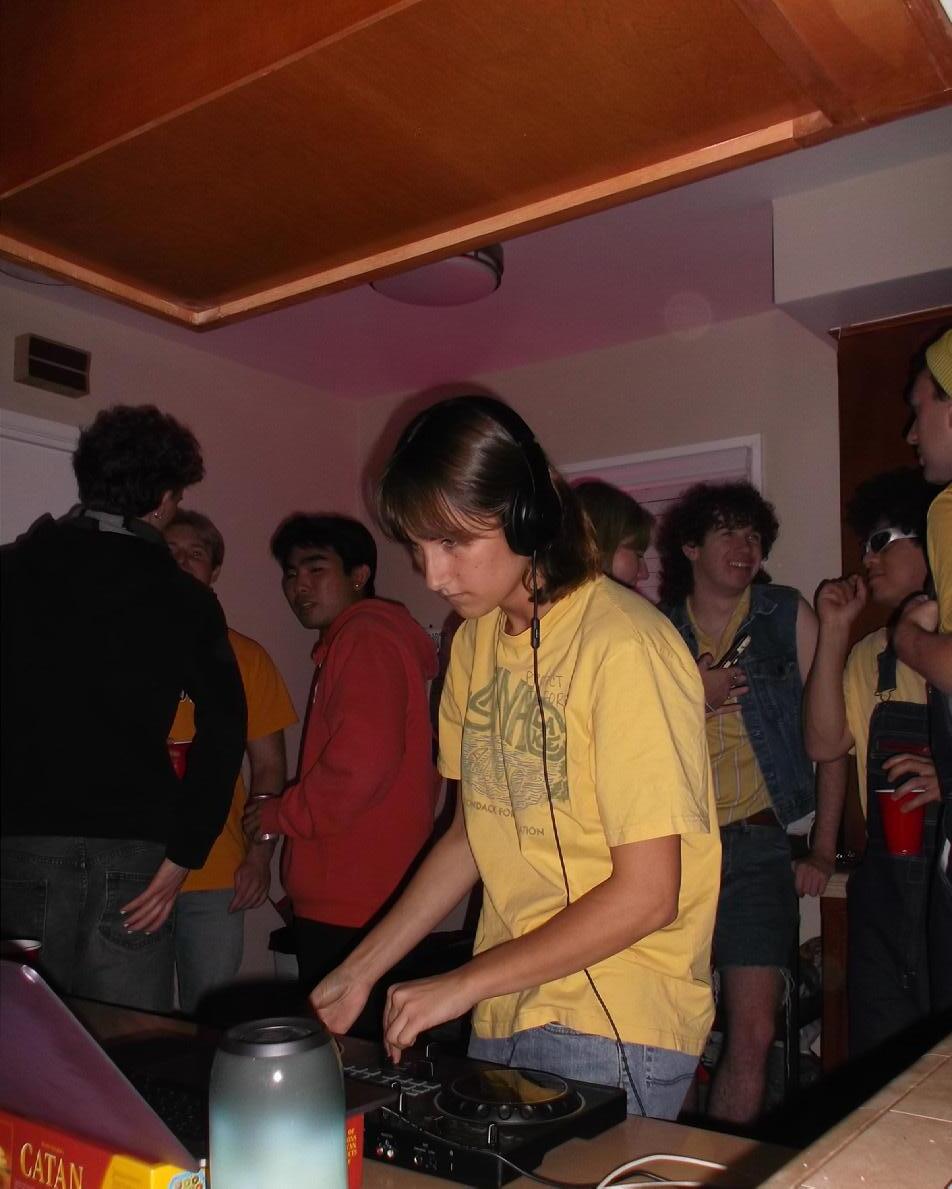
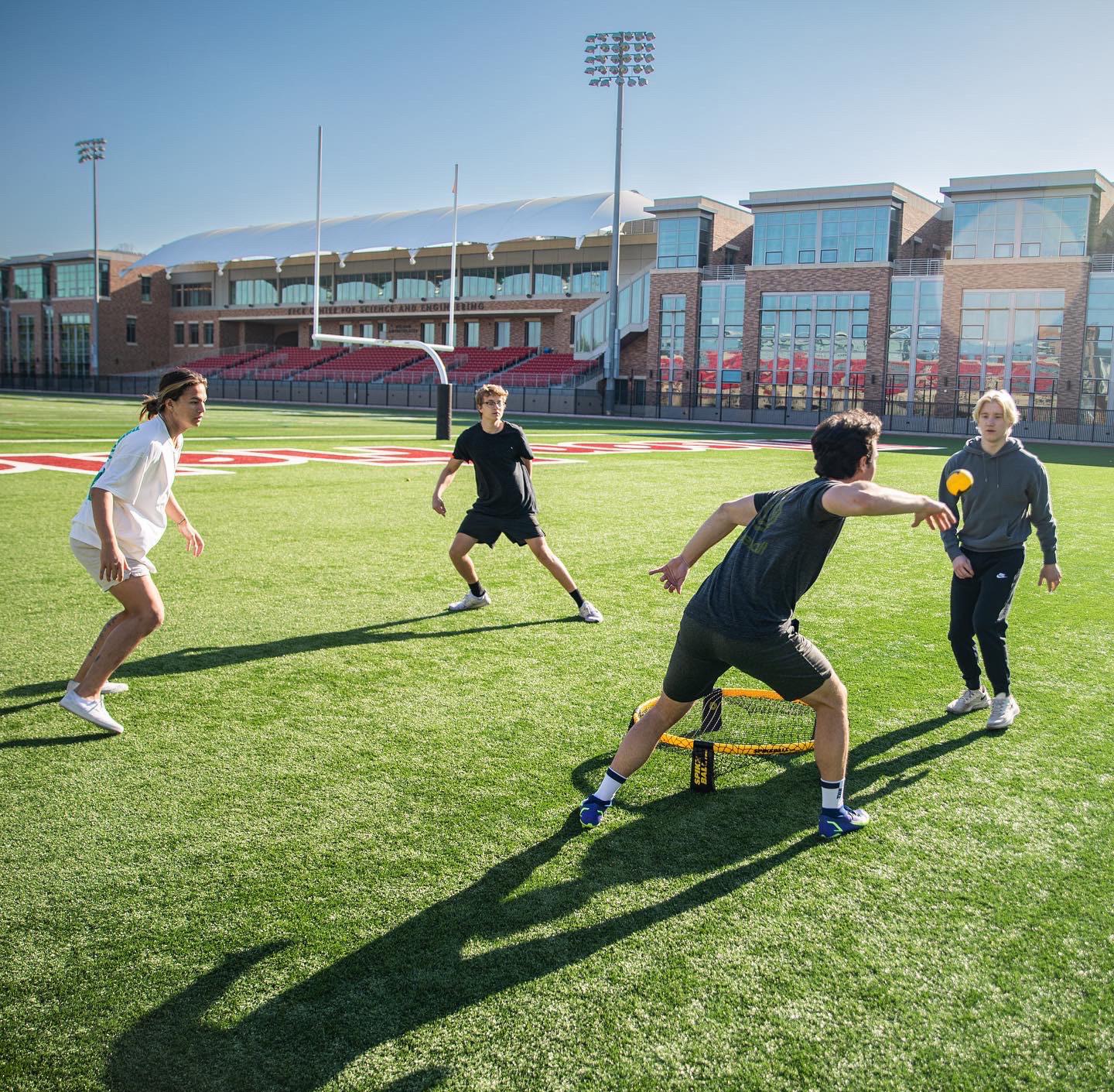
What’s the Deal With Clubs?
The Price of a Social Life
Support for Struggle or Struggle for Support Mixed Reviews on Chapman’s Psychological Services By. Holland Hatch & Lauren Cavalieri Chapman Magazine Mavericks: Student Voices on Fire! By. Kiana Tanizaki 60 66 70 74 pg. 60 pg. 44
STaff page
Editors In-Chief
Sukhman Sahota Marjorie Stemmler
Managing Editor
Social Media Manager
Nicole Kavros
Sarah Hart
Holland Hatch
Kiana Kalahele
Lauren Cavalieri
Staff Writers
Senior Writer
Brian Guevara
Allie Leichter
Sophie Wehrlie
Kiana Tanizaki
Dylan Nichols
Makenna Kunimura
Alexandra Der Boghosian

The Votes AREN’TIn

Student voters voicing their opinions on the 2024 election. Graphic by Sukhman Sahota
Is Chapman ’s Political Pulse Dying?
By Sukhman Sahota
As the 2024 election approaches, sophomore Yness Riedel, a Democratic leader on campus, faces a challenging dilemma: She not only loathes Donald Trump, but she’s no fan of Joe Biden either — her own party candidate.
She’s not alone. Some students are questioning their participation in this election because there’s no one running that they want to see running the country.
ifornia Irvine allowed English Professor Matthew Goldman to see a clear difference between Chapman and other universities.
In his view, it’s because Chapman lacks a teacher union.
“People are very afraid to say or do anything here. There’s no spark to kick it (political activism) off.”
-Professor Matthew Goldman
“We obviously hate Trump a lot more, but we hate Biden just as much,” she said.
It’s a critical election, and it’s led to many student-led protests. But at Chapman?
Where is the outrage that many other colleges are experiencing?
Teaching a class at the University of Cal-


“At UCI, there is so much activism, and it’s modeled by the faculty,” he said. “We [UCI teacher union] go on strike if we’re pissed off, and UCI students see that.”
Goldman explained rhetoric’s role and a potential reason for Chapman’s lack of political protests or conversations.
“It needs to be enacted in some way. Someone needs to be saying something or get people to do or say something,” said Goldman. “People are very afraid to say or do anything here. There’s no spark to kick it (political activism) off.”
Senior Chapman Republican club member Michael Ricci believes the small student population and heavy workload may be another reason for the lack of activism amid an election year.
“It’s hard for students by themselves to get that kind of momentum,” said Ricci. “That’s where clubs come into play.”
Traditionally at Chapman, Chapman Republicans and Chapman Democrats have
Chapman Democrat’s Yness Riedel shares her thoughs on this year’s election. Photo courtresy of Riedel
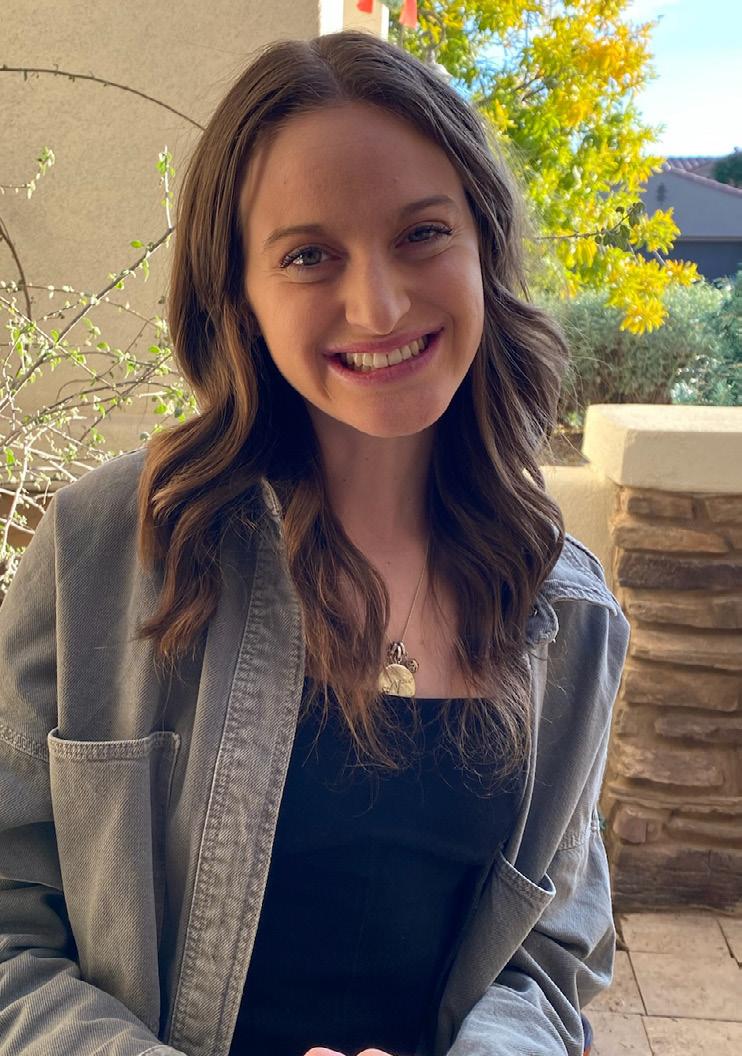
played a prominent role in the campus’s political culture.
“I do feel an increase to try to get young people to vote. But at the end of the day, it’s just such an uphill battle,” said Ricci.
A few do have enthusiasm. It may shock some Chapman students, but senior Chapman Republican club member Kate Robinson is a devoted Trump follower.
“Personally, I’m a Trump, Maga, American first type of Republican,” she said.
Yet, she wants to see more efforts from her own party club.
“We should be promoting Republican candidates,” she said. “Because we [Chapman Republicans] have a range of viewpoints.”
Riedel, the Director of Activism for Chapman Democrats, recognized Delany’s desire for more election knowledge.
“People don’t know where to find these resources or where they can have discussions about it,” she said.
Riedel hopes to solve the problem by having more Chapman Democrats tabling in the piazza. However, her hope to make resources available may not unfold as expected.
Chapman Republicans, who tabled a lot last semester, can speak on some of the struggles with tabling. Ricci, a transfer student, recalled bringing a table in the middle of his past college campus to promote the Republican club.
But now, when Chapman Republicans tables, he only thinks about paperwork.
“I would like to see more political information available.”
-Sophomore Forest Delany
Some students wish for more guidance, whether it comes from the clubs or the school.
“I would like to see more political information available,” said sophomore art history major Forest Delany. “Maybe if the Chapman Republicans and Chapman Democrats want to do that.”
“I would feel more pressure to get people engaged if the school didn’t make it so goddamn hard,” said Ricci.
College students nationwide have protested in response to America’s active role in Israel and Gaza. They are calling for American officials to support peace and anti-war resolutions, according to CNN.
Chapman has yet to see one student-led protest on the topic.
Chapman Republican’s Kate Robinson expresses her plans to vote for Donald Trump. Photo courtresy of Robinson
“I would feel more pressure to get people engaged if the school didn’t make it so goddamn hard.”
-Senior Michael Ricci

Chapman’s administration has attempted to remain neutral when addressing Israel and Palestine in hopes of staying sensitive to all opinions. However, some students see Chapman doing more harm than good with this method.
“A lot of the neutrality on campus is a direct reflection of Chapman’s neutrality,” said Riedel.
Yet, English professor Tom Zoellner discussed that the administration getting politically involved on behalf of the school might become a “hazard” to the campus environment.
 Chapman Professor Matthew Goldman shares some insight on protest rhetoric. Photo courtresy of Matthew Goldman’s website
Chapman Professor Matthew Goldman shares some insight on protest rhetoric. Photo courtresy of Matthew Goldman’s website
“I don’t know that the national academic conversation around the subject has been all that helpful,” he said. “That’s not what a university is designed to do.”
Zoellner argued that there is “a pretty wide range of venues in which students are able to express themselves politically.” For example, writing an opinion piece in The Panther, starting a student publication, making your feelings known in the classroom, or putting up signs.
Declan Coakley, senior political science major, added to the sentiment of students getting politically involved.
“You can have a real impact if you get out there and add your voice to these organizations,” he said.
But how do students get involved when they struggle to find candidates or organizations they identify with?
“People feel less represented than ever before,” said Goldman.
For now, Riedel has opted out of the two-party system. Doing what she says is “very American.”
“I know I’ve faced a lot of shame for saying, ‘I’m gonna be writing down a different [third-party] candidate for my vote,’” Riedel said. “But you’re supposed to share your voice.”
BUSINESS IS BLOOMING IN OC
By Kiana Kalahele








13,
in
Planet
a
Santa Ana.
BLOOMING



Pulling out her government-issued I.D. to prove to the security guard that she was in fact 21 years of age, Chapman senior Layla Haymond stepped inside an elegant building, admiring the high-end items in glass cases. They looked more addictive to her than jewelry.
That artistic edifice was none other than a weed dispensary.
“Never would I have guessed that buying weed would be so luxurious,” said Haymond, a business administration major. “It felt like I was shopping at Gucci or Louis Vuitton.”
The Gucci doppelgänger Haymond visited is known as KUSHAGRAM, located in Santa Ana. It’s one of 117 OC licensed weed dispensaries that have been blazing a trail in the cannabis industry for Chapman students and many others alike.
After passing Proposition 64 in 2016, California is one of 38 states that have legalized medical marijuana and one of 24 states that have legalized the drug for recreational use for adults 21 years and older.
According to California’s Department of Cannabis Control (DCC), five cities in Orange County currently have weed dispensaries. These include Stanton, La Habra, Irvine, Costa Mesa, and Santa Ana. The other 29 do not.
To combat that, some weed dispensaries do ship products to residents. For example, KUSHAGRAM delivers to places such as Anaheim and Mission Viejo.
And, it’s safe to say that consumers are pleased.
In the state alone, $5.9 billion in sales were made for legal recreational and medical marijuana in 2023, according to a study published by the MJBiz Factbook.
But, what makes these dispensaries even more addicting?
It’s not just the weed.
a well-known
Ana. Photo
weed dispensary
by Kiana Kalahele

Haymond—who visits KUSHAGRAM almost weekly— enjoys the welcoming atmosphere of the store and always finds it easy to purchase her favorite products from either a self-service kiosk or a representative at the front counter.
“The floor looks like it’s fully made of marble and there’s beautiful abstract artwork hung up on the walls,” she said. “Plus, they always have my favorite pre-rolls in stock, so it’s a win-win.”
And, KUSHAGRAM isn’t the only dispensary like that.
Senior creative writing major Gavin Long has always been a huge fan of Blüm, formerly known as People’s OC, in Santa Ana for all of his THC needs.
Blüm is a candy shop for adults. Joints. Pre-rolls. Edibles in the form of both gummies and chips. Weed-infused drinks. Disposables. Just straight-up bud. You name it, Blüm has it.
Yet, his love for the store doesn’t just stop there.

“Obviously, my main priority is buying weed, but I just got to say that the funky decorations in Blüm really seal the deal,” said Long. “For one, there’s a huge fake tree in the store that extends from the first floor all the way to the top of the building. I have no clue why it’s there, but I love it.”
Blüm’s infamous tree can also be seen from outside due to the large glass windows and by CA-55 freeway goers.
“A big reason why I started choosing Blüm as my go-to store for was solely because of how crazy that tree looked from the outside,” said Long.
Blüm customers are first greeted by a security guard who checks their I.D. and mentions any promotions taking place. Then, customers are able to choose whether they want to stay on the first floor or take the wooden spiral staircase up to the second.
The first floor features six self-service kiosks so customers can purchase their products and leave—all in a span of less than 15 minutes. A small lounge area with a few couches, chairs and a fluffy black carpet also takes up much of the space of the first floor, which Long’s
 An array of edibles purchased from Blüm, a weed dispensary, in Santa Ana. Photo by Kiana Kalahele
An array of edibles purchased from Blüm, a weed dispensary, in Santa Ana. Photo by Kiana Kalahele
friend, Devin Chong, really enjoys.
“The lounge is hands-down my favorite part of going to dispensaries,” said Chong, a junior business administration major at Chapman. “And, the lounges aren’t just at Blüm. I think every dispensary I’ve been to has had one and they never kick you out.”
According to Chong, he’s sat in Blüm’s lounge area for over an hour just to “take it all in.”
However, Long’s favorite part of the store is hidden on the second floor.
“There’s at least like 15 jewelry cases upstairs and they’re all filled with weed,” he said. “It doesn’t get better than that.”
On the second floor, customers are able to peruse the different cases to decide what they want to buy. Then, they pull a number from a small machine and wait for the next available employee to help them make their purchase.
“The kiosks downstairs are cool for people who are looking to get in and out, but I really like being able to see all the vapes and edibles in the flesh before I buy,” said Long. “It makes the whole process a lot more fun.”


And, senior computer science major Sarah Fieck agrees.
Leaving Santa Ana—known by OC weed fanatics as the ‘kingpin of dispensaries’—Fieck’s dispensary of choice is located in Costa Mesa, known as 420 Central.
420 Central doesn’t just call itself a “cannabis megastore” for nothing. According to Fieck, they sell over 50 brands of weed products both in-store and online.
“The place is huge, it’s actually crazy,” she said. “And they’ve got everything from sativa to indica to hybrid products laid out on counters and in cases so you can easily see them all.”
Just like Blüm, 420 Central has a very similar setup. From the small lounge to the security guard to the choice of using a self-service kiosk or speaking with an employee in order to purchase products.
“Upon walking in, the store gives off a ritzy vibe for sure,” said Fieck. “But, it’s also a bit edgy. There’s some graffiti on the walls and these psychedelic-looking paintings, which do relate really well with weed culture.”
And, even though the store may give off that essence of luxury, the prices do not.
“Normally, I spend $90 every time I go to the dispensary,” said Fieck. “While that may seem like a lot, I’m also purchasing multiple products at once. So, that $90 gets me a pack of edibles, some pre-rolls, and a
The layout of 420 Central, a weed dispensary, which is located in Costa Mesa.
Photo Courtesy of 420 Central’s website
new vape cartridge for my Stiiizy.”

Just like Fieck, Chong also appreciates the cheaper prices and promotions that dispensaries offer to customers.
“The first time I went, I wanted to buy edibles that were $35,” he said. “The guy at the front gave me a 25% discount because I was a new customer, so I only ended up spending $25.”
Along with promotions and deals, weed dispensaries have also benefited the communities they operate in, particularly Santa Ana.
“Right now, Santa Ana has over 27 different cannabis dispensaries in the city and they’ve been working out really well for the community so far,” said DCC Chief Information Officer Sean O’Connor. “There haven’t really been many complaints from the public either. In fact, these dispensaries have actually provided benefits and additional revenue to the city.”
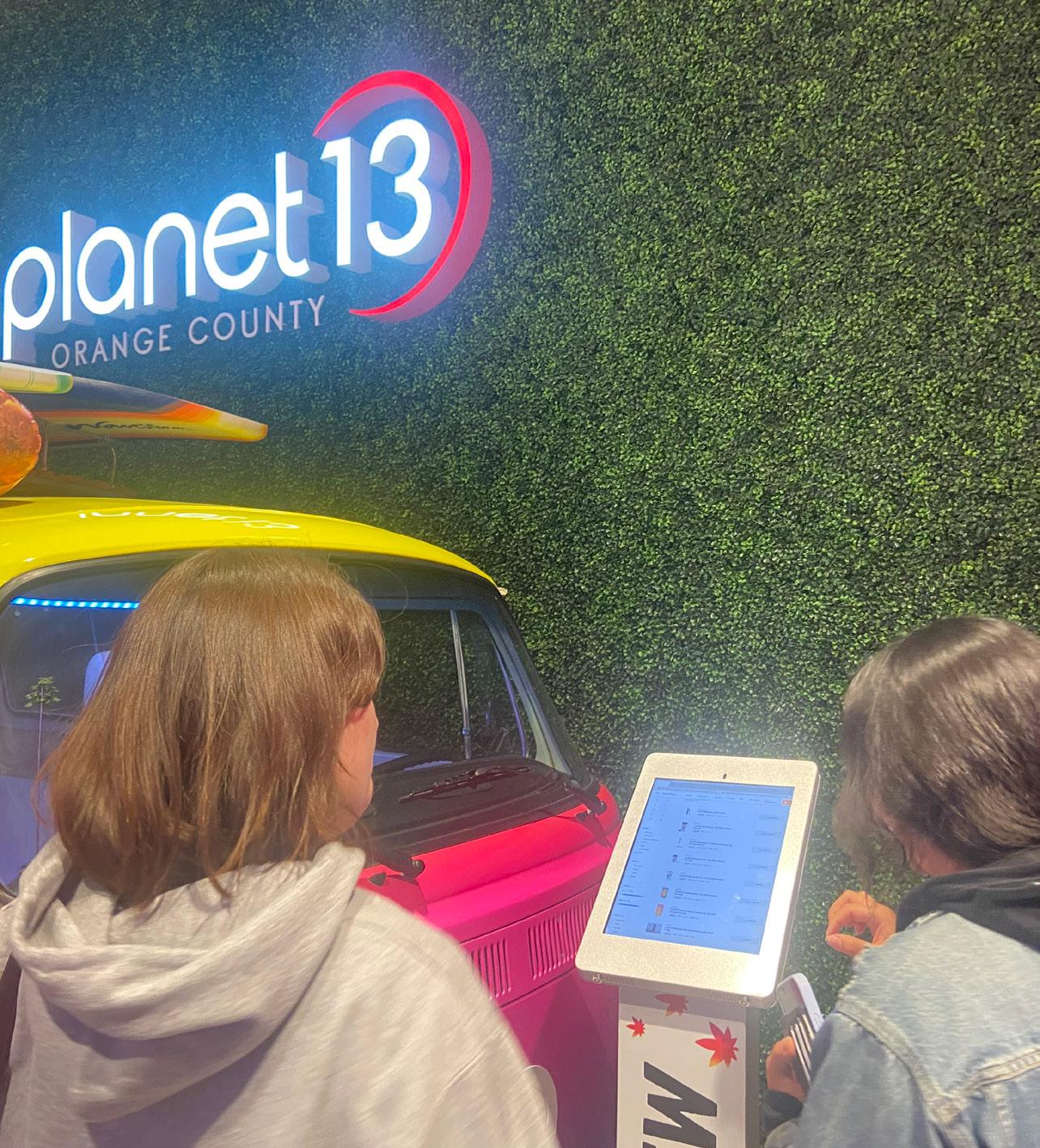
And, senior creative writing and communication studies double major Kari Lien also loves Santa Ana the most.
Considered to be California’s largest dispensary at 55,000 square feet, Planet 13 is a gold mine for anything and everything weed.
“Not only is Planet 13 humongous and always has everything I need, but it literally stays true to its name,” said Lien.
“The place looks extraterrestrial; it actually feels like you’re on a different planet when you’re inside.”
- Senior Kari Lien
Upon entering the dispensary, customers are immediately engulfed by vibrant colors, props, and displays, including a digital screen of sand from a beach display and another interactive screen featuring an 80-foot waterfall that customers can take photos in front of.
“There’s also a Volkswagen van in the store that has fake smoke coming out of it and there’s all these colored umbrellas hanging from the ceiling,” said Lien. “There’s even a gigantic octopus statue just located right in the middle of the dispensary.”
Customers of all ages—above 21, of course— flock from around the county to check out the eccentric decorations and get their weed fix.
Sarah Fieck (left) and senior Karla Carmona browse over Planet 13’s weed menu. Photo by Kiana Kalahele
“I’ve seen other college kids my age in there, but I’ve also seen a bunch of older men and women, probably in their 40s or 50s or maybe even 60s, shop there too,” said Lien.
It’s true.

According to statistics from Flowhub, the cannabis consumer base in California is made up of 19% Generation Z, 49% millennials, 18% Generation X, 13% baby boomers, and 1% silent generation consumers.
“These dispensaries are really for everyone,” said Lien. “I mean, who wouldn’t want weed? It’s great.”
Well, not everyone.
Junior business administration major Quincy Lee has never, and will never, smoke weed in her lifetime due to the long-lasting negative effects that it can have on an individual.
“I like my lungs. I don’t want them to become faulty or die out early from smoking weed,” she said. “People in OC and across the U.S. are becoming addicted to a drug that is just going to end up hurting them more than helping them.”
Many other residents, like Lee, also worry about addiction and drug abuse that come along with smoking or using illicit drugs, with one of the top ones being weed.
According to a 2012 study by the Orange County Health Agency—which surveyed 2,928 residents— marijuana is the most abused drug among adults in OC, with 33% of respondents reporting lifetime use of the drug.

However, even with constant backlash, weed consumers in OC have only continued to grow.
To keep up with the popularity of the drug, weed dispensaries may even start looking for new ways to keep their customers hooked—aside from wacky decorations and a variety of products.
Luckily for them, Haymond already has a new idea in mind.
“Unfortunately, I have yet to find a dispensary where I can toke it up inside,” she said. “But once I do, I’m never leaving.”
A map showcasing licensed weed dispensaries located in Orange County for customers to go to. Illustration by Kiana Kalahele
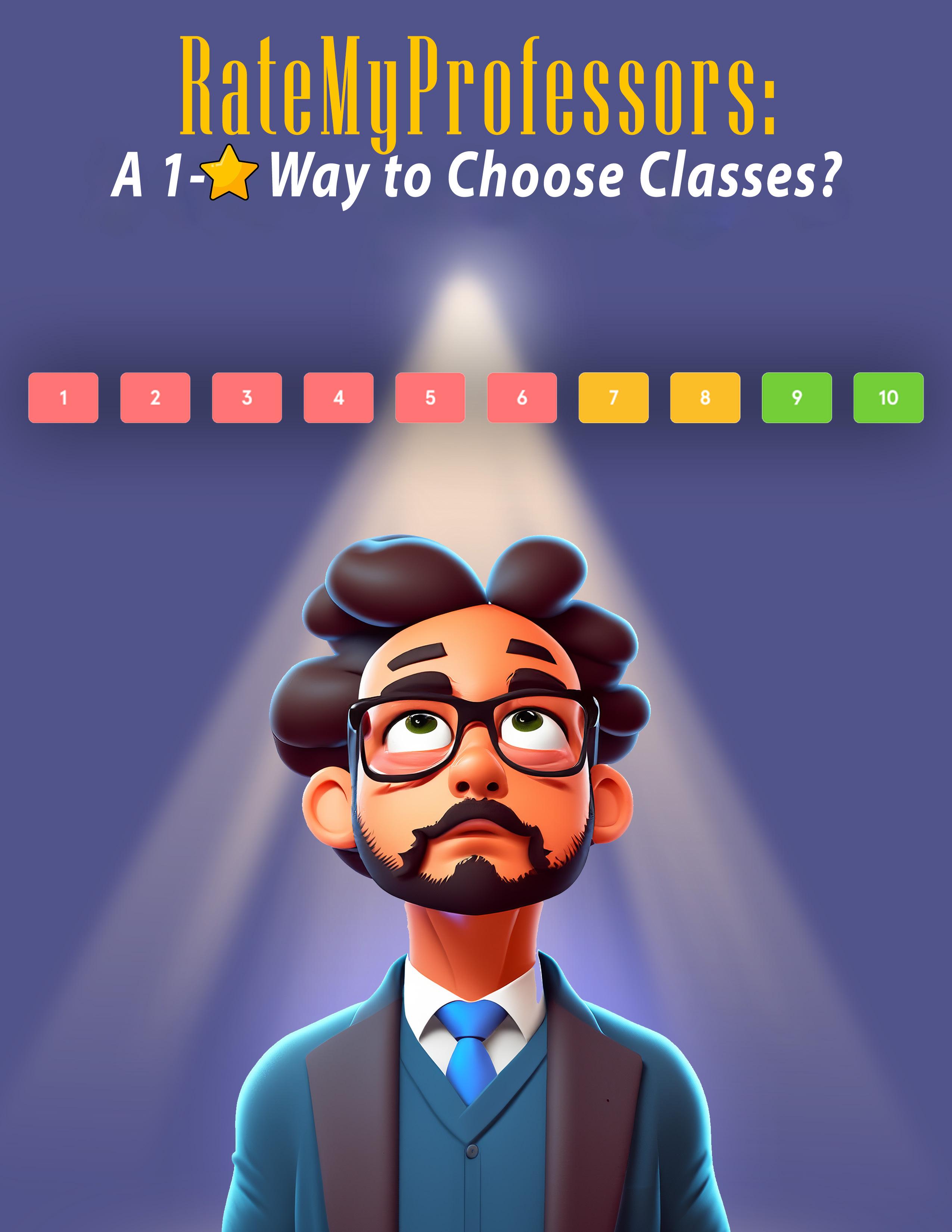 By Brian Guevara
Illustration by Brian Guevara
By Brian Guevara
Illustration by Brian Guevara
Atypical RateMyProfessors review might go like this:
“This man is the most inconsiderate person EVER…. and this man prides himself on ‘real world experience.’ In the real world we can go to the bathroom whenever.”
Or like this:
“The most caring professor I’ve ever had. Yes, you have to work to get the grade. Oh no! Your grade is your effort.”
Those were real. And, it might surprise you, the students were talking about the same professor: accounting professor Scott Anderson.
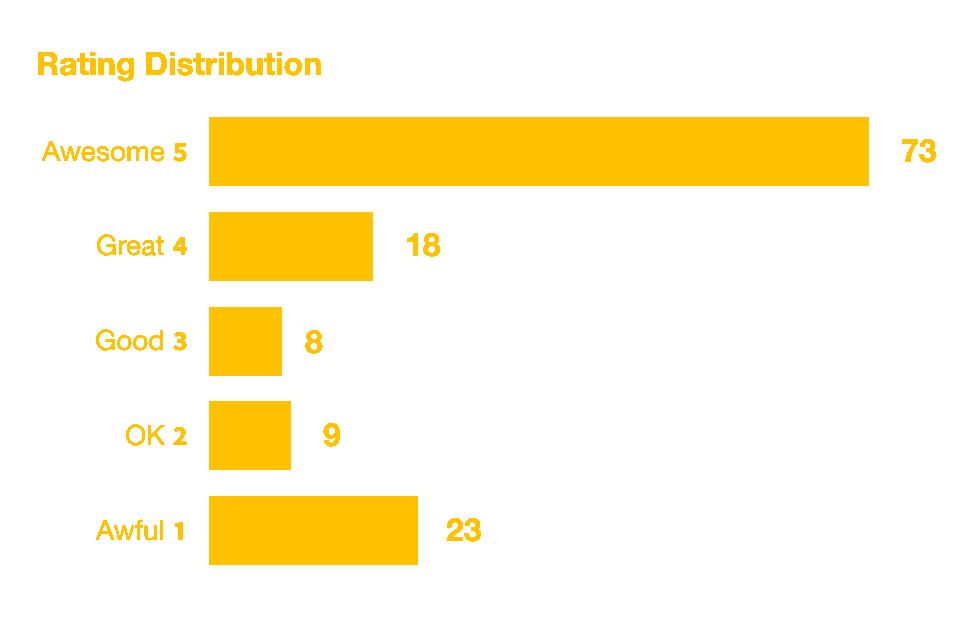
RateMyProfessors is college students’ final word on whether they should take a professor’s class — or not. If they see something they don’t like, they won’t take the class under any circumstances. If they see raving reviews, they’ll fight for whatever it takes to get a spot.
But, some do question its credibility. What if there’s a better way to go about
this, for example publicizing Chapman’s own faculty evaluations by students? How valuable is RateMyProfessors?
To senior business major Gil Bothwell, it’s highly valuable.
“I live and die by RateMyProfessors,” said Bothwell. “I’d do anything to avoid dealing with a bad professor.”

But, according to some instructors, RateMyProfessors isn’t as balanced as it seems.
Accounting professor Anderson, who has seen both praise and negative criticism said that, like with the popular reviewing website Yelp, people mostly go to RateMyProfessors when they have something bad to say.
“Marketing classes always tell you that people will always share a bad experience, but not a good experience,” said Anderson. “So, the information about professors will be skewed negatively.”
Student Gil Bothwell checks an instructor’s name on RateMyProfessors. Photo courtesy of Bothwell
Professor Scott Anderson’s rating. He is rated 3.8 stars, despite three stars being the least rated value. Photo courtesy of RateMyProfessors

All the options given by RateMyProfessors for students to describe the course they’re evaluating. Screenshot courtesy of RateMyProfessors
One of the recipients of a negative review is law professor David Berkovitz. He’s got amazing reviews, but also some that aren’t very flattering.
“Terrible professor, don’t take him if you want to fail,” said one anonymous reviewer. Berkovitz isn’t the only one confused at that review. “Worst professor I have encountered while at Chapman,” said another disgruntled student.
“I don’t look at any social media because of reviews like that. Course evaluations provide more feedback to me than anonymous reviews.”
- Professor David Berkovitz
Berkovitz puts more stock into what students directly tell him, as opposed to online reviews with no identity behind them. But not all students send negative notes to RateMyProfessors.
Freshman Makenna Kunimura, who took a college course her senior year of high
school, loved her professor enough to write a RateMyProfessors review on her.
Others do too. Chapman professor evaluations on the site contain hundreds and hundreds of positive comments.
At the end of the day, though, it’s all Chapman students have. It’s all they know.
But some say it doesn’t have to be.
Finance professor Terry Burnham has a different idea: Publicize course evaluations.
This way, students get opinions from those who felt okay about the class, hated it, loved it… every opinion under the sun. Not just the group of students that felt passionate enough about a professor or class that they took free time out of their day to write a review on an online forum.
Harvard University is ahead of the curve; it already has course evaluations publicly available.
Junior Jackson Kelm isn’t opposed to this,
thinking there aren’t any negatives involved. “It wouldn’t hurt for sure,” said Kelm. “The more information, the better.”
But that isn’t the case at Chapman. Only the professors and their superiors see course evaluations.
Professor Anderson loves the idea, and goes as far to say that the administration is failing to share this information on purpose.
“It seems like we have so many bad professors that the administration is embarrassed.”
- Professor Scott Anderson
Dean of Students Jerry Price believes differently, saying that course evaluations are no better than RateMyProfessors.
“In principle I see what he’s saying. On RateMyProfessors it tends to be the extremes, and that’s not true in course evaluations,” said Price. “On the other hand, course evaluations are still susceptible to subjectivity.”
Price recalls a time that he read his course evaluations. One student said he always came to class prepared, while another called him disorganized.
Kelm believes that public course evaluations, while useful, still come with their flaws.
“I don’t really take writing course evaluations too seriously, and I’m sure other students don’t either.”
Senior business major Evan Fenley agrees with Price on the negatives of course evaluations, and believes RateMyProfessors is still the best option: “You just gotta know how to read them.”
That may be the answer.
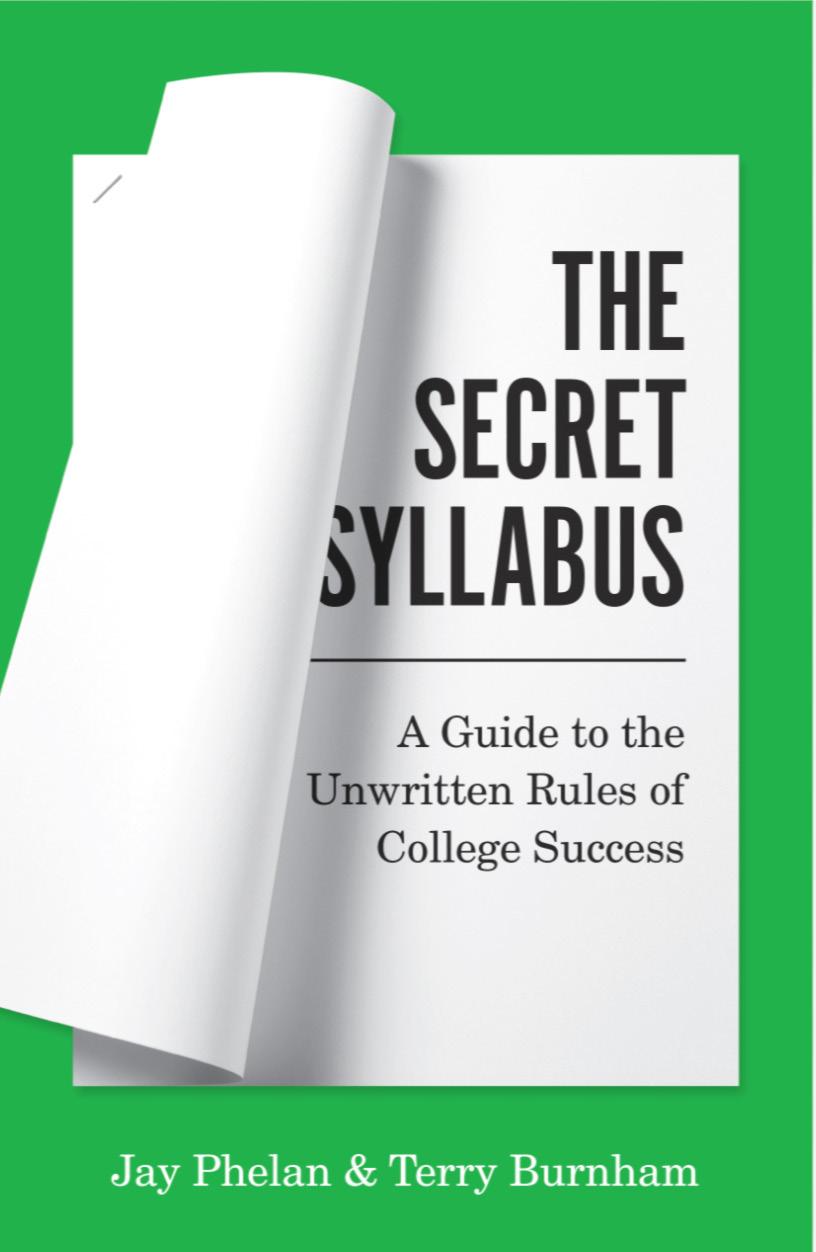
“The Secret Syllabus,” written by Jay Phelan and finance professor Terry Burnham, goes over the subjectivity of finding a professor that’s right for you. Graphic courtesy of the Princeton University Press

Screenshots of RateMyProfessors reviews all of the same instructor: Scott Anderson. Graphic by Brian Guevara

“The reader will look for the evaluations that are key to what they want to get out of the course,” said Anderson. “The same review can intrigue one student and turn off another.”
No system will be perfect, the dean of students points out.
“People saying a professor is good or bad isn’t reliable. It’s too subjective and is at the whim of whatever’s bothering the student that day.”
- Dean of Students Jerry Price
Evaluations can be read two different ways.
For example, Bothwell, as a cross country and track athlete, has limited time to do homework. So, he considers a professor that gives busy work to be “bad.” But others may find that same style of teaching to be exactly what they need.
So it turns out that the first two reviews aren’t saying the same thing after all. If read closely enough, it’s the same teaching style, expressed differently.
So who are these Chapman professors getting raving reviews? English professor Jan Osborn got a 4.8 out of 5 RateMyProfessors review.
“She brings an exceptional energy and passion to every class and works extremely hard to make each student feel welcome and appreciated.”
Most students will be glad to hook up with a 4.8 professor.

 Illustration by Sarah Hart
By Sarah Hart
Illustration by Sarah Hart
By Sarah Hart
When Sophie Cook committed to Chapman at the end of her high school senior year, she couldn’t help but think about what the director of her hip hop crew had said to her.
Her director liked to talk about what would happen to dancers who went to college. According to him, they would become lazy and gain weight. A lot of it.
And when Cook’s best friend went to college during her junior year of high school, he was proven right.
“When she came back [home], a lot of people had a lot to say about it,” said Cook, now a freshman biology major at Chapman. “I watched that happen, and it became a fear of mine.”
Fear of the infamous Freshman 15.
The rumor is, college freshmen are supposed to gain 15 pounds their first semester away from home.
The reality is, only very few college students gain weight to that degree. The larger issue is that fear of gaining weight causes issues surrounding mental health and confidence, especially with incoming freshmen.
While the concept of the Freshman 15 has been around for much longer, this nationwide rumor first gained traction in 1989 after the publication of the article “Fighting the Freshman Fifteen” in Seventeen magazine. According to the article, weight gain in college is an inevitable reality for freshmen due to drinking, unhealthy eating habits, and a lack of exercise.
widespread, but should incoming freshmen be worried? According to Tracy Bryars, Chapman professor and registered dietitian, the rumor has very little truth to it. “It’s definitely largely folklore,” said Bryars. “There’s been a lot of studies on it. Basically, the ultimate findings were that on average [new college] students gain about three pounds. And only nearly about 12 percent of students gain 15 pounds or more.”

Rumors of the Freshman 15 seem to be


Maddie Ishii, a second-year student at Orange Coast College, recalled how the rumor that she might gain 15 pounds influenced her behavior going into her first year of college.
“I was nervous to eat, I was nervous to do any sort of exercise,” said Ishii. “I didn’t want to gain any sort of muscle weight.”
Other students, like freshman and business administration major Mia Schneider, noticed how the fears of weight gain manifested with other freshmen.
“I know the first week or so of college there were so many people in the gym,” said Schneider. “There were a lot of girls at the treadmills.”
Sophie Cook shares her experience with the Freshman 15 phenomenon. Photo courtesy of Cook

She also brought up the fact that she hears about things like the Freshman 15 on social media. Namely, Tik Tok.
“I think one Tik Tok that I saw was like, ‘There’s this workout routine you can do to a Cardi B song to counteract things before you get that Freshman 15!’” said Schneider.
“When I’m getting ready to go out with my friends, I guarantee that three out of six are gonna be like, ‘Oh my god, I feel so bloated tonight,’ said Cook. “Girls usually dress less concealed when going out. If we’re going to be wearing that, we’re obviously going to think about [our bodies].”
Cook also talked about how communal dining has drawn her attention to disordered eating habits among her peers.
“A lot of my friends [only] eat a salad every single night,” she said. “I know it’s not that good.”
Freshman dance major Yazzy Picazl agreed that eating dinner in the dining hall every night with her friends has opened her eyes to her classmates’ eating habits. She also added that she notices a lot of negative self talk among other freshmen, especially at mealtimes.
“I’ve heard them talk about their thighs and how they’re really big, or their stomach and how it’s really bloated. They say that all the time,” says Picazl.
“I’ve been working out for a year now, and I still feel like I could look better.”

According to Bryars, peer reviewed studies maintain that there is only a small percentage of individuals that gain 15 lbs during college.
-Freshman Gordon Lin
Still, first-years are experiencing a newfound sense of bodily insecurity.
Both Picazl and Cook brought up that while there is a lot of pressure on young women to maintain a certain weight and to look a certain way, they also think there are also a lot of issues surrounding men’s body image as they enter college as well. Especially when it comes to going to the gym.


Yazzy Picazl noticed a change in her peers’ eating habits. Photo courtesy of Picazl
Maddie Ishii’s behavior her freshman year was affected by rumors she might gain 15 lbs. Photo courtesy of Ishii
“Bulking up is something that kind of develops like body dysmorphia, I think,” says Gordon Lin, another freshman and business administration major at Chapman. “I’ve been working out for a year now, and I still feel like I could look better, I could work harder, I could be more consistent.”

“I was nervous to eat vous to do any sort of exercise.”
-Sophomore Maddie Ishii
about it,” Kardy said.

Still, Lin pointed out that he thinks rumors like the Freshman 15 disproportionately affect girls more than boys.
“I heard [about the Freshman 15] from…a girl friend of mine. Even a lot of the girls from back home that I know, they’ve talked about being afraid of the Freshman 15,” he said. “I think there’s less pressure for guys and more pressure for girls.”
Lin’s friend, freshman and business administration major, Drew Kardy, agreed with him.
“From my perspective, I feel like girls are a little more insecure than guys are. Especially here, with all the sorority stuff. If it doesn’t go your way, people kind of get in their heads

According to Bryars, there is evidence that supports the idea of how women are impacted by disordered eating more widely than men. Still, that is not to say that men cannot be affected.
“About 30 million Americans will have an eating disorder at some point in their lives,” said Bryars. “According to the National Eating Disorders Association, about 20 million will be women, and 10 million will be men.”
Professor Bryars preaches balanced meals and regular exercise in the nutrition class that she teaches. Most importantly, she tells them what to do if they think that they or someone they know is experiencing disordered eating.
“The first step would be to go to their advisor, or to the health center,” she says. “Chapman has a lot of amazing resources in that way.”
According to Bryars, support is key to helping someone take the first steps towards getting help for disordered eating.
Nonetheless, students like Cook have been able to experience growth in a new environment with new people and opportunities.
“Even though that pressure was put on both me and my best friend, we’re both doing fine,” said Cook. “We’re living life. We’re both healthy and happy.”

 By Makenna Kunimura
Photo by Kade McKenna
By Makenna Kunimura
Photo by Kade McKenna
Scuffing her feet, huffing and puffing, freshman Rhyley Pruitt is exasperated while speed walking to her class. She is late because her iced coffee got lost in the Starbucks mobile ordering line.
Pruitt isn’t the only one whose drink has gone into the mobile order void.
“It’s annoying waiting for that long,” Pruitt said.
The Chapman campus Starbucks recently had a glow-up with its new renovation and new mobile ordering system. Starbucks officials say it’s great. But do their student customers say it’s great?
Not so much.
Students don’t approve of the long lines, long waits, and inconvenience of the Starbucks app. You also can’t use Panther Bucks while mobile ordering. Authorities claim that there has been no negative feedback since the new renovation and students are really enjoying the new additions added. But is this really the case?
When asking students about the inconvenient and provoking phenomenon that the campus Starbucks has caused, a look of desperation to rant about this topic filled everyone’s faces. Asking the simple, yet, burning question of: “What are your thoughts on the campus Starbucks?”
Students sighed. Shook their head. And began to rant.
“Waiting for a mobile order here takes too long,” said junior communication studies major Kajal Reddy.






One of the most popular places on campus that students utilize their Panther Bucks on is Starbucks, but Panther Bucks are not used through the app. This is a big complaint from many students, especially freshmen.
“It’s so unfair,” Reddy said. “The whole point of having Panther Bucks is so that we can use it at Starbucks.”
Since Starbucks is one of the only places on campus students can get coffee, some students are outraged.
“There’s a lot of rush hours so when I need to get to class and can’t wait in line it’s so annoying that we can’t use our Panther Bucks while mobile ordering,” said Anna Nguyen, an undeclared freshman.
Making a mobile order. Graphic by Makenna Kunimura


Another concern from students is the fact that anyone could take any item from the mobile order table. This table is packed with items. There’s a lot of trust that goes into picking up orders at Starbucks.
“Starbucks is the biggest honor system,” Nguyen said. “There’s always so many drinks on the mobile app table. I feel like they need to change the system.”
On the other hand, Rodney Reed, the Resident Direct Manager of Sodexo University Services, claims that students are loving the new additions added to the campus Starbucks.
“Our new mobile ordering system has been really well received by students and a great addition. I can’t think of any cons about our Starbucks here on campus,” he said.
Reed attested that the baristas are enjoying their time while working.
“It’s almost like being a bartender, the faster they go the more fun they have. The workers actually enjoy being busy,” he said.

Uh, would the workers back that up?
Not according to Hannah Lee, a sophomore health science major at Chapman who used to work at the Starbucks on campus.
“I stopped working at the campus Starbucks in October,” Lee said. “I didn’t like the work environment there.”
Not only are the students complaining about the mobile ordering system, workers also expressed grievances.
“On the first day the mobile ordering system was introduced it was absolute chaos and people didn’t even get their drinks,” Lee said. “I walked in and there was a big ass line and people crowding the mobile order section. I preferred when we didn’t have mobile ordering.”
Lee did not enjoy her time while working at Starbucks but two things really made her experience dreadful.
“I might have enjoyed working there more if we actually got tips,” Lee said. “The big-
 Rodney Reed Sodexo spokesman.
Rodney Reed Sodexo spokesman.
Out of stock items in mobile order line.
Photo by Makenna Kunimura
Photo by Kade McKenna
gest issue was being thrown off my groove when customers asked ‘When is my drink going to be ready?’ Especially when we were in a rush, it was so annoying.”
Other workers, surveyed informally? Not a lot of barista enthusiasm.
“Well, it’s not the worst job in the world,” said one barista.
And another. “Working here is fine. I guess.”
One damper to their enthusiasm is that so many customers come in bunches that they often break the rules. Especially hitting Starbucks between classes.
“Last semester I waited for like 25 minutes after my pick up time for a drink but I needed to get to class,” Pruitt said. “I had no choice but to grab someone else’s drink from the table.”
Starbucks insists it’s right in the success of the new system. But the students who disagree come in bunches. Said undeclared freshman
Sofia Robe:
“Literally anyone you ask here is going to have something bad to say about not being able to get your drink before classes. It takes longer to get your mobile order than it is to get your order if you waited in line.”
Another issue Starbucks has to deal with:
After recent controversy surrounding Star-
bucks union workers and their perceived support of Israel, some college students across the country are boycotting Starbucks. Trying to put pressure on the company economically.
“Walking around campus with the Starbucks logo on my cup makes me feel uncomfortable because of the significance of this issue,” said junior business major Emily Paris.
Junior Sukhman Sahota agrees with that sentiment.
“I tell myself not to get Starbucks because I’m willing to make my life a little more difficult if it means I’m not supporting this huge issue,” Sahota said. “It can be hard, but you can’t forget the reason you stopped going.”
Despite those protests, the Chapman Starbucks continues to be a busy place. But some just want to see its service improved. Until then, students like Reddy still need their coffee.
“The lines are long but I will still go,” she said.

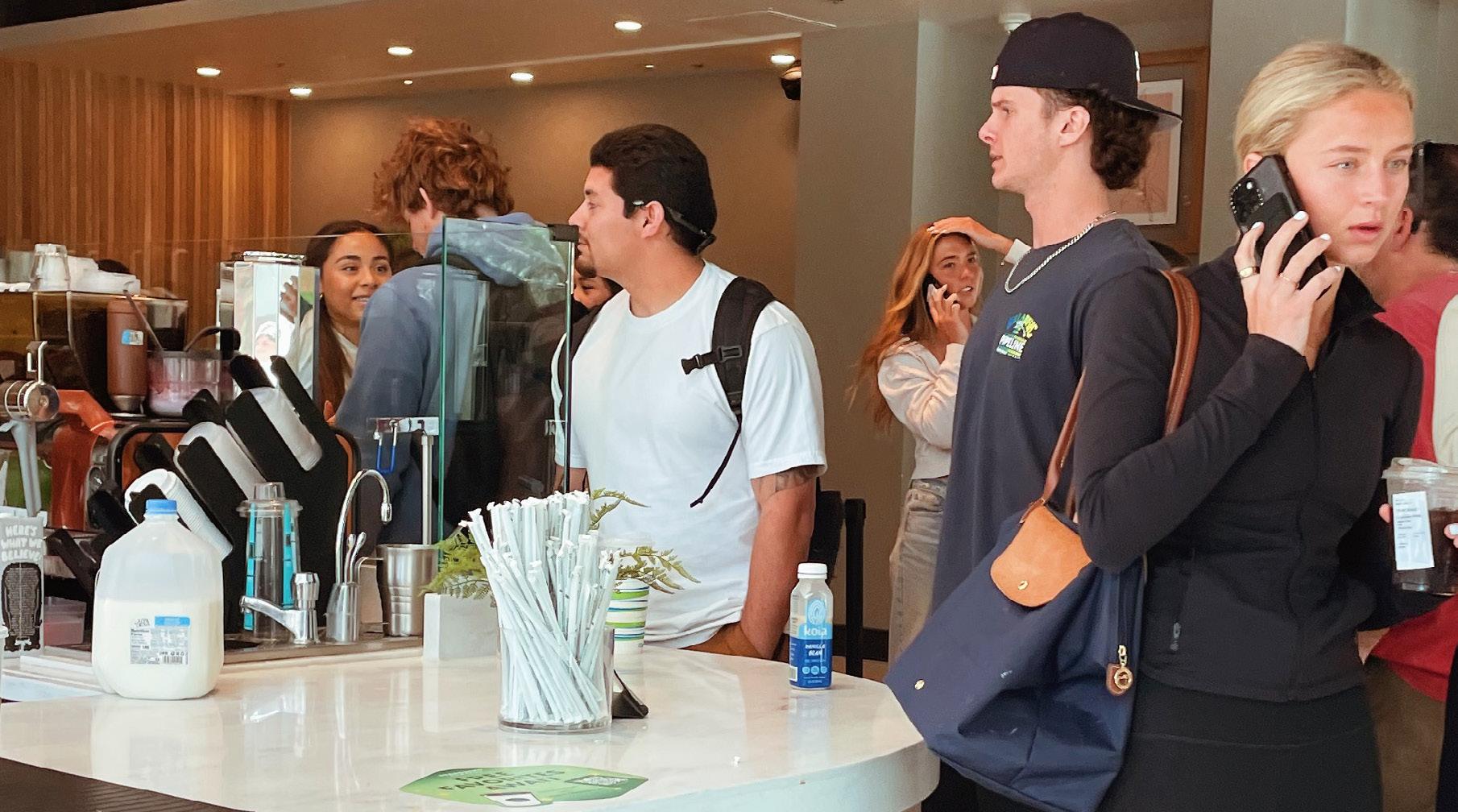
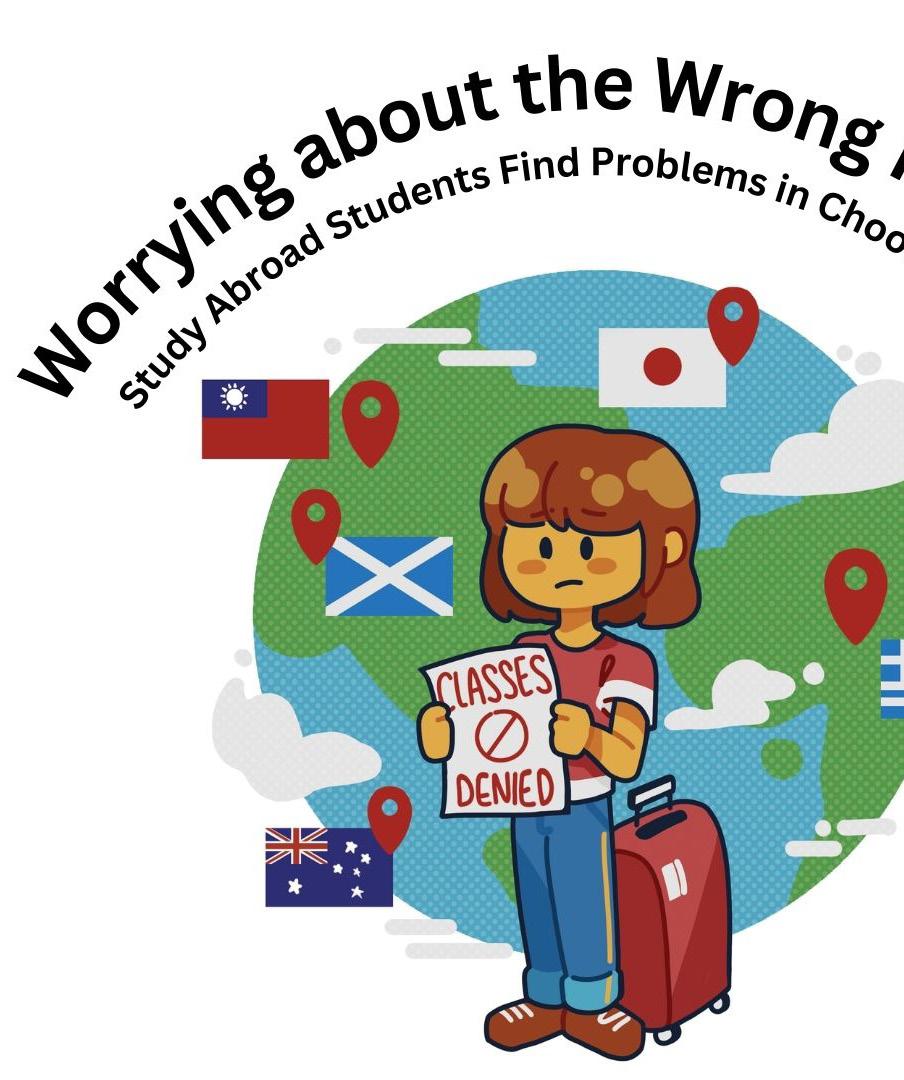 Illustration of student stressed from Study Abroad classes.
Photo courtesy of Aixian Wiriadinata.
Illustration of student stressed from Study Abroad classes.
Photo courtesy of Aixian Wiriadinata.

Every year, hundreds of Chapman students dream of taking classes across the world. For Emma Walker, a sophomore peace studies major, she finally got her chance.
After waiting over a year, Walker finally took her first steps in Scotland for her Study Abroad program. The stress of waiting was finally over.
Or so she thought.
Walker knew where she was going, but had no idea what classes she’d be taking.
“I had to wait two weeks [in Scotland] not knowing what my classes were,” said Walker.
This sentiment isn’t just a Walker issue. Multiple students deciding to study abroad have had a similar experience with feeling left in the dark about what classes they’ll be taking. With enough stress from the move itself, students wish there was an easier and quicker way to get their classes ready to go before their bags are even packed.
But one problem: The staff at the Center for Global Education, say they’re helping as much as possible. But with few staff and so many applicants, class schedules sometimes get less priority.
“We oversee hundreds of students who go abroad and we’re an office of like, a little over ten people,” said Angelique Acuna, an administrative assistant at the Global Center, and a former Study Abroad student herself.
Even so, student applicants can find it frustrating.
For Walker, she’s been packed since kindergarten, stating that her mom went to Semester at Sea, and she’d be following in her footsteps.
“Study Abroad was not an if, it was a when,” said Walker.
By Marjorie Stemmler
So when Walker finished the paperwork and bought her plane ticket she was ready to go, but her classes were not. After sending in her requests for her classes to be approved by Chapman, she got back crickets.
“I sent nine classes to get approved, and they only approved three,” said Walker. “The first week I only had one class that worked for me”
Walker’s classes weren’t finalized until the 18th of January, ten days after classes started at the University of Glasgow.
While it may seem like a middleman moment for Chapman to have to approve classes, this is because they have to make sure the classes fit into Chapman criteria, and if they aren’t approved, students do not get credit.
Ashlyn Catuna, a senior communications major, had almost the exact same problem as Walker when taking her Study Abroad trip to Japan back in her junior year.


After picking Chapman for their gram to Japan in high school, than prepared to fly across possible.
But Chapman wasn’t as speedy.
Sending in her classes to get Catuna didn’t hear back until was already in Japan. She had to get any attention.
“My dad had to email Chapman three to four times,” said Catuna. her, she says almost every student from Chapman had a similar cation.
For Catuna, getting these classes preference.
“I had a tight set schedule for get four classes that go with wouldn’t have been able to graduate,”
This wasn’t just Catuna’s issue, also said this was in issue because weren’t accepted, they’d be far demic program.
Catuna, Walker, and all Study to Chapman through their Center tion. This is where anyone interested learn more about what Study start the process of traveling
Ashlyn Catuna in the streets of Tokyo during her Study Abroad trip. Photo Courtesy of Catuna.

their Study Abroad proschool, Catuna was more the country as soon as speedy. get approved in October, until January, when she had to resort to her father Chapman after I emailed them Catuna. And it wasn’t just student that was in Japan similar issue with communiclasses was more than just for graduation, if I didn’t with my Japanese minor I graduate,” said Catuna. issue, students like Walker because if their classes far behind on their acaStudy Abroad students talk Center for Global Educainterested can not only Study Abroad is, but also traveling overseas.

“The first week I only had one class that worked for me” - Sophomore Emma Walker
Acuna of the Global Center said the process has to be a team effort.
“Students submit their global request forms online and we send it over to the registrar for approval,” said Acuna. She also included how the heads of departments will also be tied into the process, if neither the registrar or Center for Global Education are sure a class is equivalent at another university.
Acuna understands the stress of waiting for approval, but says her staff does as much as they can with their small size.
Acuna says the only way the center’s staff can help students is if the student reaches out to them, and they’ll be there on the double. But without communication, the center won’t know if there’s an issue.
Emma Walker meeting a new friend during her Study Abroad trip to Scotland. Photo Courtesy of Walker.
Christine Yu, a junior film production major, had problems herself with classes, but with the school she was going to attend, not Chapman.
Yu, currently in Greece for her Study Abroad program, said she had trouble when her new school gave her an old catalog to look through, having her send over a request to Chapman for approval on classes that no longer existed.

“The university in Greece didn’t offer any catalogs for the spring semester, even though I was studying abroad then.” Said Yu.
After getting sent back a barren approval form, she knew she had to start over, but to not blame Chapman.
“There’s only so much Chapman can do,” said Yu.



Acuna says that even if the problem isn’t on Chapman’s end, that students can still reach out to the Center of Global Education to help.
“We have a contact with all programs that we can talk to. So we may not know particular people or programs but we have one person who we can email and ask to check in on that student,” said Acuna.
But, not every student’s Study Abroad classes gave them such a stink.
River Gayton, a senior strategic and corporate communications major, says her class approval went as smooth as could be.
Michael Cheng next to a new friend while studying abroad in Australia. Photo courtesy of Cheng. Christine Yu trip. Photo

“I would say the class approval was pretty easy,” said Gayton, after she studied abroad in Italy last year. “I sent some classes and backups and got everything approved.”
Michael Cheng, a junior electrical engineering major, said the same thing about his process with getting classes checked off.
“It was pretty smooth,” said Cheng, while currently on his Study Abroad program to Australia. “Not all classes I sent got approved, but it still worked out.”
While it seems like class approval can be a toss up, if a student still doesn’t want to go through the hassle, there is an alternative: travel course.
A travel course is similar to studying abroad, but instead of a semester, a student can go during interterm or the summertime for around three weeks. And the best part, there’s only one class to take, and it’s al ready picked out for you.
“My Chinese teacher told me about a class she was offering over the summer and I’ve always wanted to study abroad so I decided to go,” said Wiriadinata.
No matter a travel course or study abroad, every student has had nothing but amazing things to say about their program. Even with the stress, studying abroad is a must for many.
“It’s still worth it, even through all the stress,” said Walker. “Once everything is figured out it will all fall into place.”

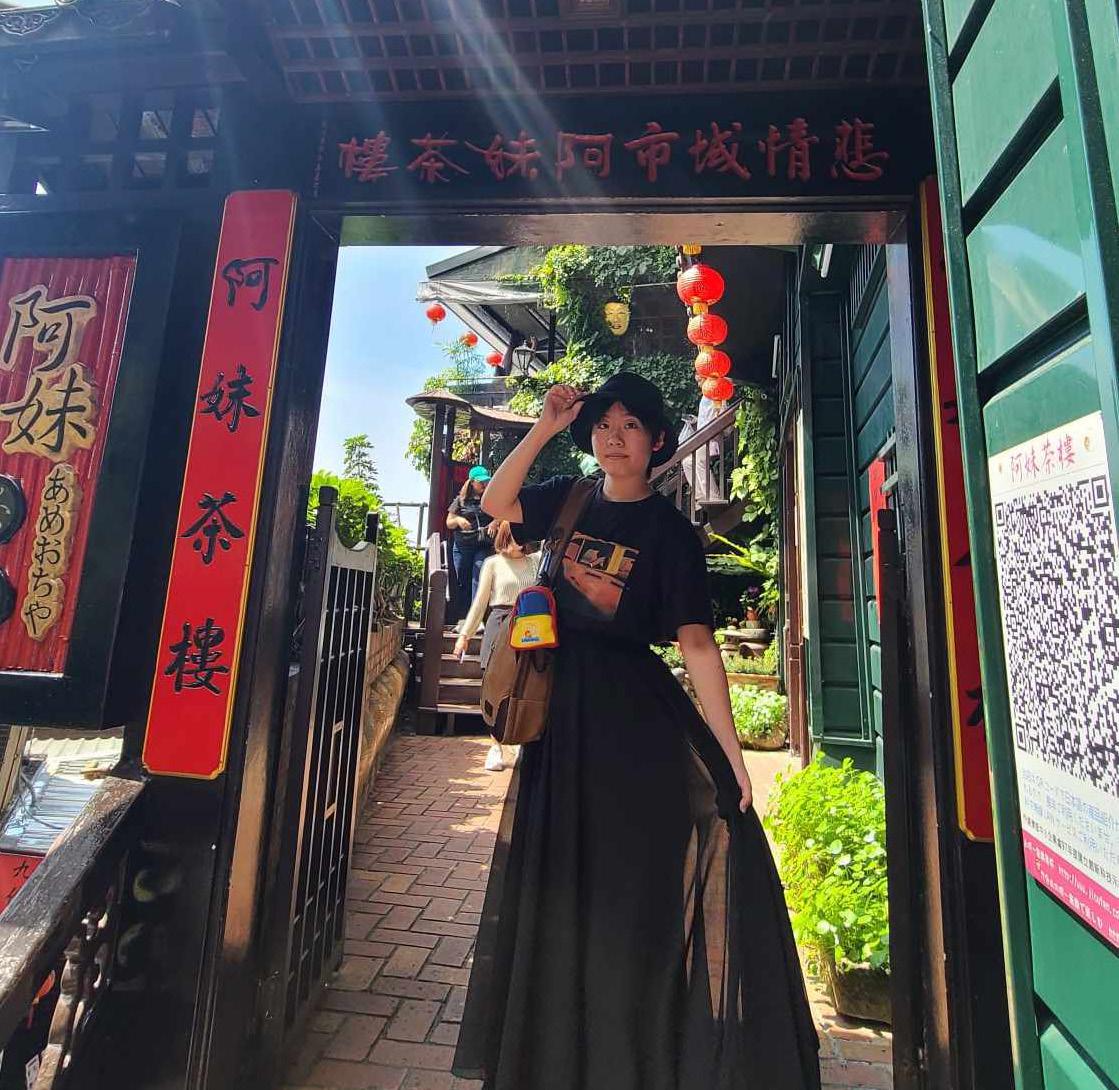
Aixian Wiriadinata, a sophomore ac counting major, explained how they took a travel course to Taiwan after not being able to study abroad.
Yu in Greece During her Study Abroad Photo Courtesy of Yu.
Aixian Wiriadinata walking around Taiwan during her travel course. Photo courtesy of Wiriadinata.
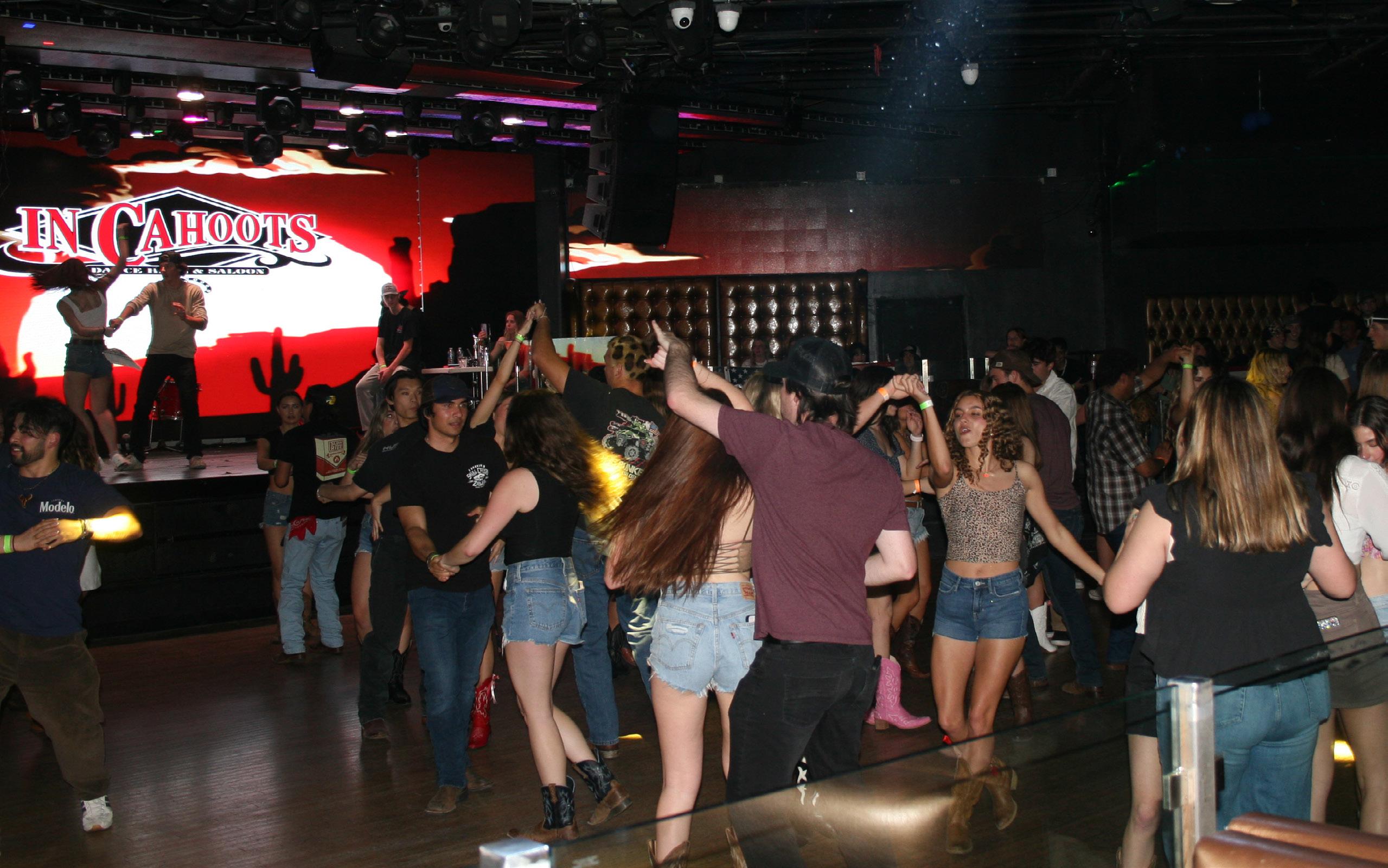

OGET IN LINE
nce Kayleigh Gilbert hears the scuffing of boots sliding across a hardwood floor and the tangy tune of her favorite country song, she becomes someone else.
That’s the power of line dancing.

Chapman
Catching a New Dance Fever!
By Nicole Kavros
“It makes you feel so empowered,” said Gilbert, a sophomore business student and Orange County native.
Line dancing has been leaving its boots all over Chapman’s campus. It’s now common for students to storm their local

line dancing club every week. InCahoots in nearby Fullerton, the most popular line dancing spot in the area, even changed its age limit to 18 to profit off the massive college audience.
The entry fee alone is $20 a person, but these shindig-loving college kids won’t hesitate to lay down the money.
The sport is even big enough to start a club dedicated to teaching Chapman students more dances.
Gilbert, who founded the new line dancing club, first discovered the activity shortly after her 18th birthday. A tradition among her high school peers, she explained that country line dancing for Orange Country teens is on par with milestones such as learning to drive or taking the SAT.
When she decided to go to Chapman, she was still within close proximity to all of her favorite line dancing clubs. She found that line dancing culture at Chapman was just as big as it was at her high school.
“It makes you feel so good once you know [the dances]. And once I realized that, I was like, I need to know all of them. I need them to play the ones I know,” said Gilbert.
She’s not wrong — when a song comes on that people know, it’s like watching chess pieces glide smoothly across a board. Everyone knows

where to go, when to kick, and how many times to stomp. They’re so perfectly in tune with the blasting beat of the gritty country sound.
Gilbert just had to round up a crew to help get her club off the ground. And with the amount of students who line dance, she had no problem finding interested parties.
She’s already hosted a successful first meeting for the Stompin’ Boots club, where 12 enthusiastic members showed up to
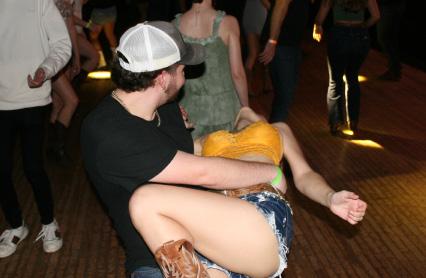
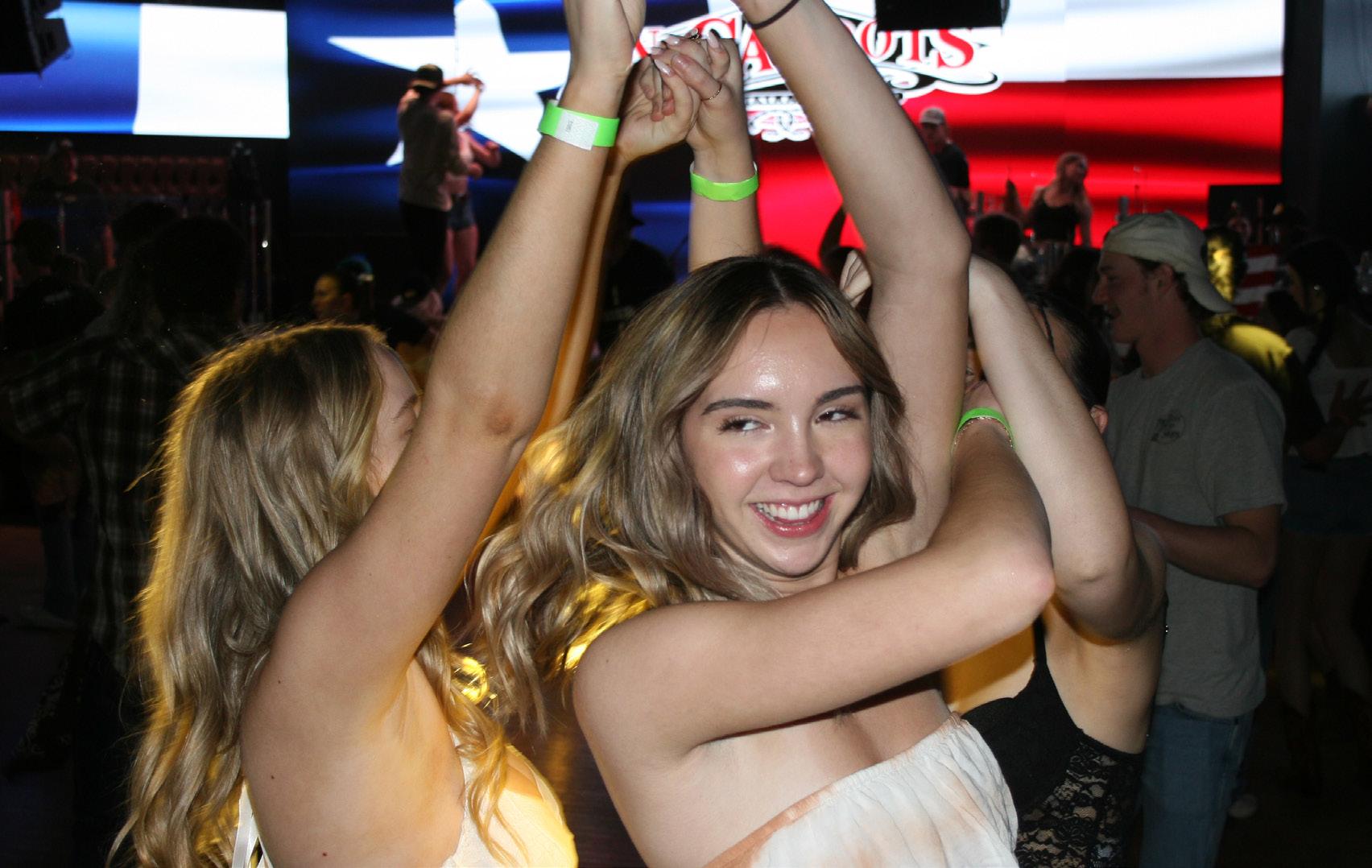 At a line dancing club, perfect strangers turn to dance partners.
Photo by Nicole Kavros
Chapman student Emma Gould loves to dance with her friends. Photo by Nicole Kavros
Brian Guevara is not a line dancer. But he still loves to go to line dancing clubs. Photo by Brian Guevara
At a line dancing club, perfect strangers turn to dance partners.
Photo by Nicole Kavros
Chapman student Emma Gould loves to dance with her friends. Photo by Nicole Kavros
Brian Guevara is not a line dancer. But he still loves to go to line dancing clubs. Photo by Brian Guevara
learn a new dance.
Gilbert is enthusiastic for the future, and is brainstorming ways to advertise future meetings. She knows that with the amount of students who flock to InCahoots every Wednesday night, her club will be expanding in no time.
“I always have a smile on my face when I am at my local country bar, and that’s how I know I always want to go back.”
-Senior Sammy Johnson
Line dancing is a sport unlike any other. There’s an uncountable number of dances, each set to different songs ranging from classic country to contemporary pop or ‘70s disco.
The dances even have different variations depending on where you’re doing it.
One can’t help but wonder what makes line dancing such an integral part of Chapman culture. Is it the catchy songs? The hustle and bustle of it all? The fact that you don’t need a fake ID saying you’re twenty-one to get inside?
Or, as Gilbert said, is it just the entitlement that comes with storming the dance floor once your song comes on?
Senior journalism major Brian Guevara doesn’t even line dance. He said the reason he first went to a club was with his friends, to see what all the hype was about. The reason he keeps going? He loves the atmosphere.
“I like the vibe. It’s like people cosplaying cowboys,” said Guevara.
Line dancing culture feels like entering a different reality. Everyone’s dressed up, and somehow, everyone knows every dance.
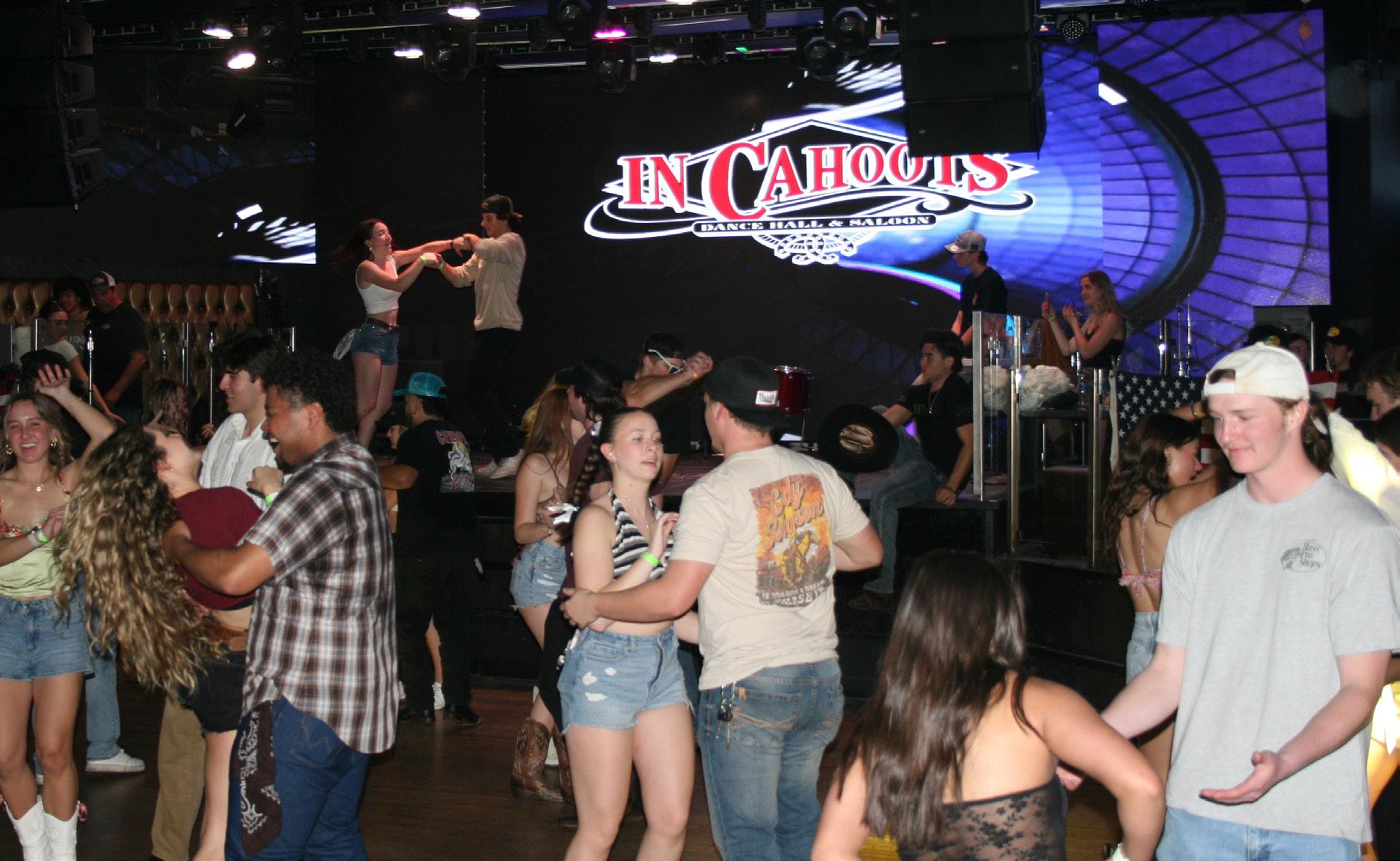
“I don’t actually line dance very much. I know one or two variations,” confessed Guevara. “But, I love watching. It’s fascinating. It’s like watching Dancing with the Stars.”
The energy that line dancers have is
The dance floor is often packed at InCahoots line dancing club. Photo by Nicole Kavros
Chapman Kathryn Becker
contagious. It inspired Gilbert to teach herself line dances from YouTube in her room. It has Guevara putting on flanneled shirts and cowboy boots. The way it spreads across the dance floor is strangely captivating. It’s the line dancing fever.
There’s a sense of community that builds in these clubs. Junior public relations and advertising major Nicolette Surabian, a dedicated line dancer who knows 45 different dances, has met some of her best friends while on the dance floor.

“I think line dancing has become popular among students because the dancing is just so fun, and there’s songs and skill levels for everyone. It’s one of the best hobbies and ways to really connect with people,” said Surabian.
Senior applied human physiology major Sammy Johnson shares a similar connection to the activity. activity.
“What makes me continue to go line dancing are the people I’ve met and the freedom I feel when I’m dancing. I’ve met and made so many of my close friends while going out line dancing,” she said.
The people that line dance
are part of a community. It’s a space where people can be themselves, let loose, and find camaraderie So maybe it’s less about the dancing and more about who they’re dancing with.
“It combines three of my favorite things: country music, friends, and dancing,” said Johnson. “I always have a smile on my face when I am at my local country bar, and that’s how I know I always want to go back.”
 Many line dancing clubs also offer bars for customers over 21. Photo by Nicole Kavros
Chapman students (from left) Emma Farris, Kathryn Treat, Caroline Maltz, and Matthew Becker damce and sing to music off the dance floor at InCahoots. Photo by Nicole Kavros
Many line dancing clubs also offer bars for customers over 21. Photo by Nicole Kavros
Chapman students (from left) Emma Farris, Kathryn Treat, Caroline Maltz, and Matthew Becker damce and sing to music off the dance floor at InCahoots. Photo by Nicole Kavros
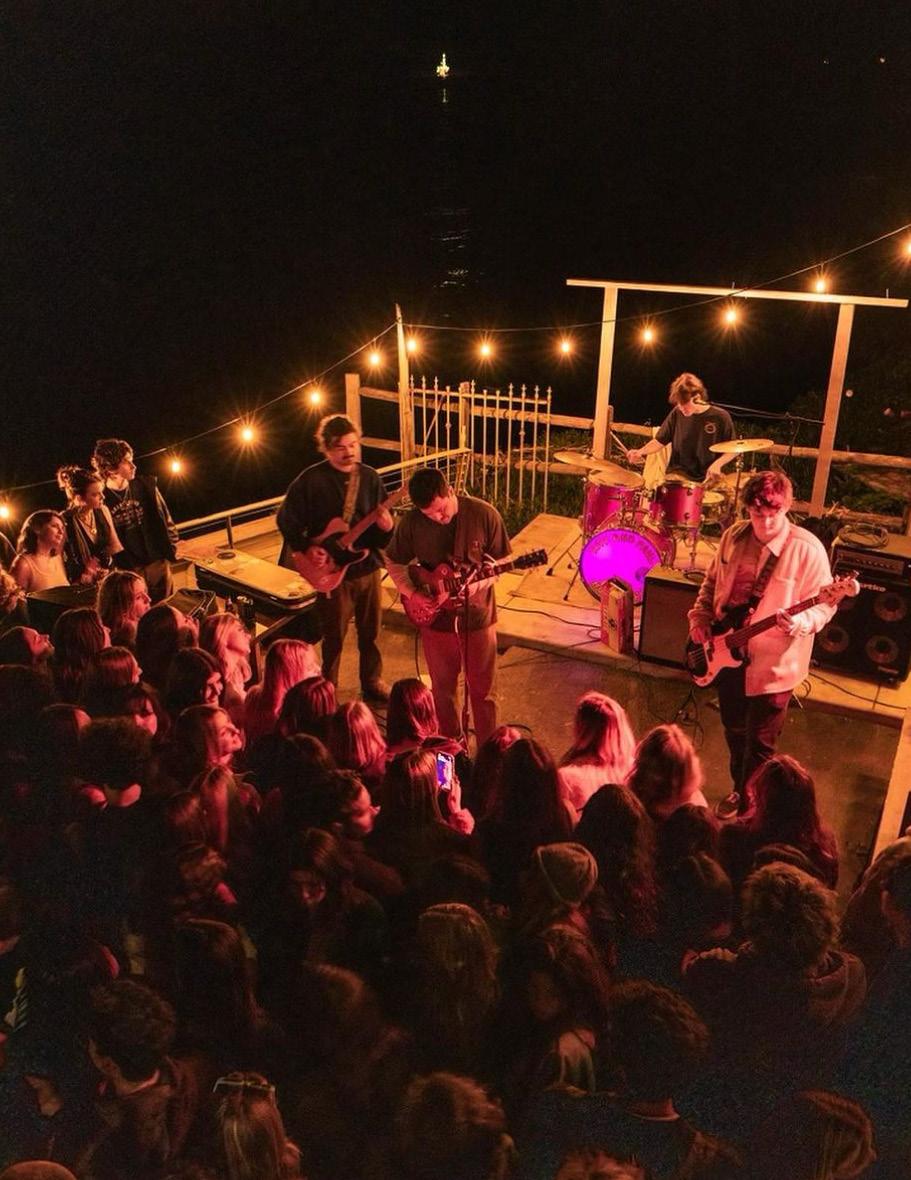
Breach The Peace
The Collective Helps to Revive Chapman Music Scene
Photo Courtesy of Where's West?
Instagram By Sophie Wehrlie
The murmurs of excited students fill the living room as the guitar shrieks electrically and the kick drum pounds rhythmically.
Until, a knock on the front door. The cops.
The crowd trickles out, along with all hope for student-based live music.
“Chapman and the Orange County community really suppress us, especially with the noise ordinance,” claims freshman Jackson Chapman of TomFoolery.
The Orange County noise ordinance restricts live music performances and house shows past 10 p.m., according to Noise Control Ord. No. 2700. Despite having a music program at Chapman, a lot of the students feel the music scene within the community is being stifled. But, some of them say, at least we have The Collective.
of them say, at least we have The Collective.
“Chapman and the Orange County community really suppress us, especially with the noise ordinance.”
-Freshman Jackson Chapman
The Collective, a club that highlights the struggling arts on campus, has filled that hole for many. Collective membership is free and open to all. The club itself works under a collective structure, meaning that all members are able to participate on Collective projects.
The Collective hosts concerts, art displays, and community events that encourage participation in the arts. Chapman students do not need to have an artistic major in order to be a part
of the club; its presence on campus serves to support all artists.
The other choice: the dreaded city curfew.
“I understand why the restriction is in place, but I do feel that Orange specifically is overly strict,” said junior Kaylee Scott. “It is hard to have events that don’t go past 10 p.m. because most concerts usually run late anyways, that is just the culture of the music scene. I wish there was some sort of compromise we could come to, maybe having a later restriction on weekends or something.”
With this ordinance in place, there is an empty void within the Chapman community. But, some

Due to such tight restrictions, Chapman musicians have to look off campus to find OC venues, which proves to be a struggle in itself.
“It’s very hard to play shows around Chapman. Venues are so far away, the
Senior Tobey Lynn performing at Flower Moon. Photo Courtsey of Lynn
"Without The Collective, there wouldn't be a music scene at Chapman."
- Chapman Alumni SIMYA
closest one is 15 minutes away, so it’s hard to ask your friends to make the drive and then pay the admission. I wish we could play more house shows. It’s a classic way to see a college band,” said senior West Hauser of Where’s West.
So where do you turn as a hopeless musician, itching to play a show?
That’s why The Collective has become so important to many on campus.
“We owe a lot to The Collective- they’re the only people who promote live music at Chapman,” said senior Zan Curleigh of Where’s West.

Originated in 2019, The Collective’s intentions have remained the same. Highlighting underrepresented artists within the community and widening the art scene at Chapman.
Whether it be through interactive visual art exhibits, student businesses and vendor pop-ups, or concerts at local OC venues, like the upcoming Flower Moon at the Garden Amp in Garden Grove.
Chapman provides opportunities for artistic expression throughout on campus events such as Storytelling with Video for Academics or the Summertime Concert Series. However, student musicians still report a lack within the community’s music scene.
“Without The Collective, there wouldn’t be a music scene at Chapman,” said SIMYA of JustRosie.
The current co-presidents, Jackson Gefen and Alden Ianelli, both having passionate and professional pursuits within the music industry, joined the club as freshmen. Gefen recalled finding The
Co- President of The Collective, Courtesy of Alden Ianelli

Collective through Instagram and Ianelli discovering them through a fellow Chapman musician, neither knowing the roles they’d end up obtaining and the mark they’d leave on so many student lives and careers.
Many artists credit The Collective for their ultimate success on campus.
“We owe a lot to people like Alden and Jackson who want to make this happen. They gave us our start,” said Hauser.
The Collective has taken it upon themselves to provide a creative space for those seeking solace.
“If they aren’t giving you the opportunity, you have to do it yourself,” said Ianelli.
Co-President of The Collective
Photo Courtesy of Jackson Gefen

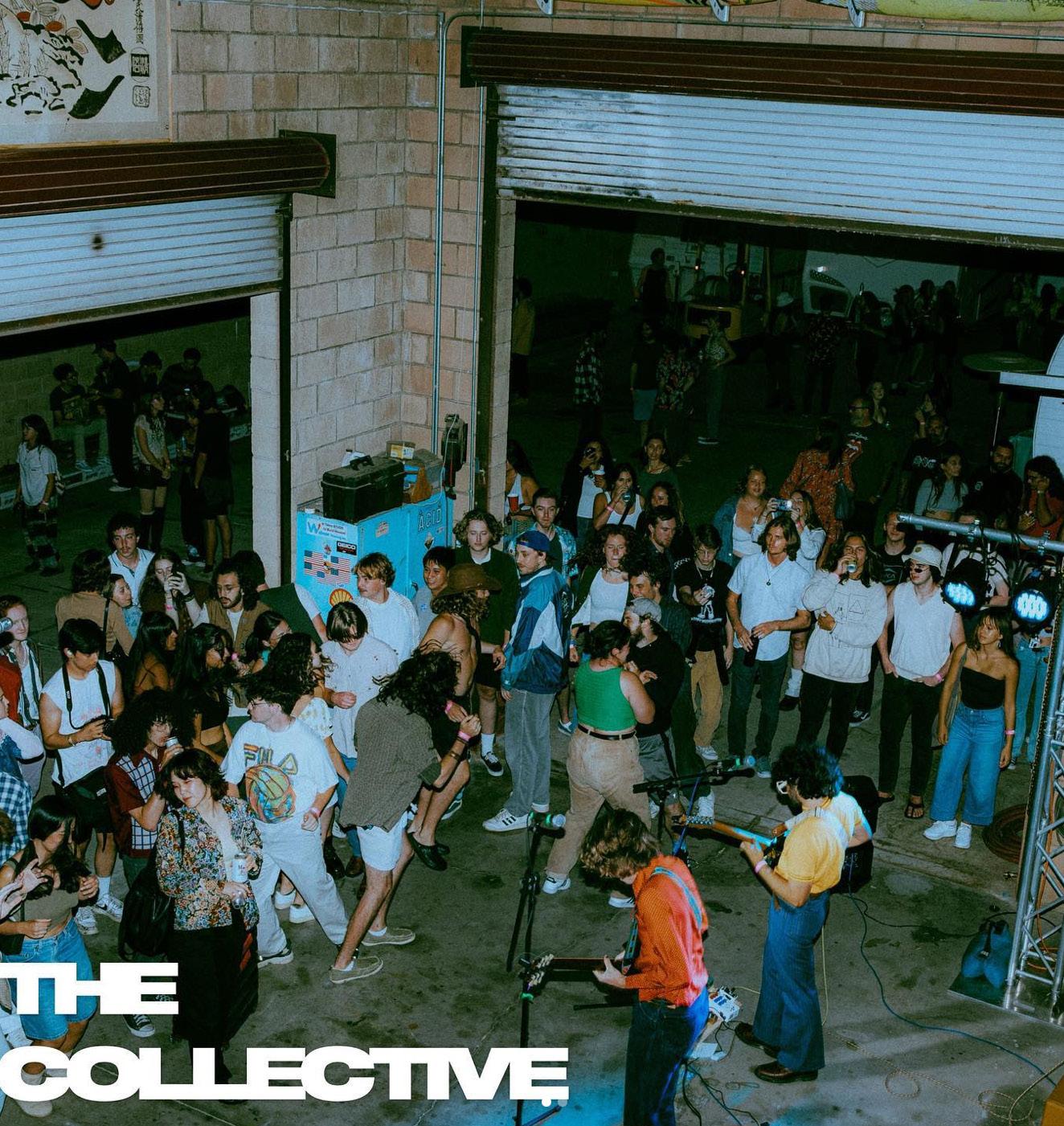

 Photos Courtesy of The Collective Instagram
Photos Courtesy of The Collective Instagram

EMMA KUBIAK IS TRYING TO KEEP THE PARTY GOING
By: Allie Leichter
Friends gather around Emma Kubiak (center) while she plays her new synthesizer on Friday, Feb. 16, 2024.
Walking into a dying party, junior film production major Emma Kubiak instantly knew what she needed to do to turn things around. Setting up her Pioneer DJ deck and speakers, Kubiak threw on her headphones and got right to work.
As soon as the music played, heads shot

mouth, Kubiak has become a popular choice for Chapman students to perform at their gatherings.
However, not everyone is fully on board yet with the whole DJ scene. Some students have been unamused by the sudden emergence of student DJs.

up and pointed their way towards Kubiak. With the music drawing them closer one track at a time, soon Kubiak had the entire party raving around her. Speakers blasting and sunglasses on, Kubiak had her hands do the talking.
One house performance at a time, Chapman DJs have stirred up the dynamics of the college party scene. Currently, Chapman has seen a rise in its DJ population. Stepping into most house parties, you will find Emma Kubiak to be the one mixing on the tables.
Gaining attention through word of
“It’s become an oversaturated market. Too many people are trying to do it,” protested senior film studies major Graham Hammond.
But even Hammond is impressed with Kubiak’s mixes, which made Hammond change his mind.
“I really like it because it sounds like she’s trying to do something different,” said Hammond.

Other students have appreciated the accessibility of the music.
“A lot of people are getting into it who aren’t necessarily musicians,” stated freshman film production major Benoit Boudreau.
“It’s creative and it’s cool, so I respect it.”
Starting at $159, the Pioneer DJ DDJ200 deck is a common DJ deck that students are starting to get their hands on to start their own mixing.
“I’m kind of surprised that a student made that,” admitted freshman
Seniors Jasmine Williams (center) and Camille Brimmer (right) dance along to electronic music in Joshua Tree at a temporary outdoor venue last May.
film production major Nicole Pasto after hearing a track of Kubiak’s.
Emma Kubiak makes her own tracks by mixing together her favorite songs, and adjusting tempos and beats. She claimed her best track ideas come to her at the “most random places. After being gifted her very own deck by her grandmother, Kubiak un-

vorite spot for creating new music.
Clicking immediately from the moment they met, music has been the main foundation of the two’s friendship.
Other people close to Kubiak have felt her deep connection to music too.
“We’ll be in the supermarket, and she’ll hear a song, and immediately think of something else to mix it to,” shared Chapman graduate and long-time girlfriend Holly Fontanetta. “It’s just insane.”

For Kubiak, the most important part of her process is experimenting and allowing herself the freedom to let loose.

expectedly found herself falling in love with mixing her own tracks.
Taking no days off, Kubiak practiced on her deck every morning with best friend Nate Penner, junior psychology major, who walked over to her house just off campus to join her.
“We spend hours doing that together,” recalled Penner.
Speakers and DJ deck spread out across the covers, Emma’s bed was their fa-
“Don’t take yourself too seriously,” Kubiak reminded. “Everyone is falling into that lately”.
Kubiak’s main purpose with her work is to emphasize that in a creation, there is still the creating: “There’s so many people where I think it would change their life if they let themselves work more carefree.”
Emma Kubiak sets up her DJ deck at a party in Orange on Sunday, Dec. 17, 2023.
Photos By Allie Leichter
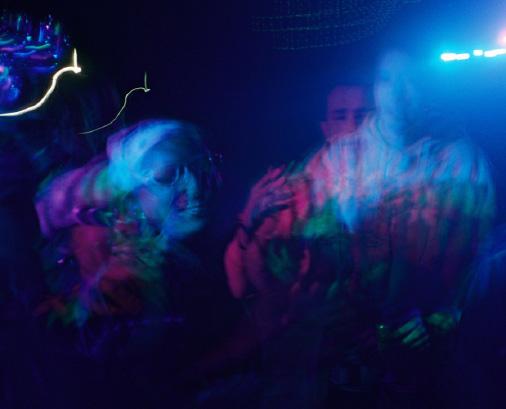
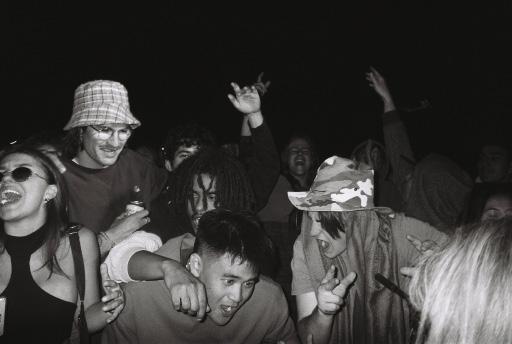

 Juniors Tahsis Fairley, Sophia Alloggiamento, and Ali Flynn (from left) enjoy the music in Joshua Tree last May.
Seniors Franco Picache (front) and Zohar Varadi (back left) dance to Chapman DJ mixes in Joshua Tree last May.
Juniors Tahsis Fairley, Sophia Alloggiamento, and Ali Flynn (from left) enjoy the music in Joshua Tree last May.
Seniors Franco Picache (front) and Zohar Varadi (back left) dance to Chapman DJ mixes in Joshua Tree last May.

Culture Couture
By Alexandra Der Boghosian and Sophie Wehrlie
Illustration by Alexandra Der Boghosian and Sophie Wehrlie
Draped in the Chinese history of the Lunar New Year, dawning a red outfit with gold undertones and surrounded by a group of peers dressed similarly, sophomore Judy Pan embraces the feeling of unity and acceptance around her.
However, as she walks through the piazza dressed in her gorgeous red kimono, peering eyes follow her. She’s never felt less understood.
“I feel like not everyone would understand what’s going on – acceptance comes from understanding,” said Pan, president of the Chinese American Student Association. “If there’s not enough understanding of what’s going on, they might be judgmental about what you’re wearing, because this is not what people see everyday.”
Traditional fashion among cultures not only reflects the folk stories and symbolic color schemes, but also pride and family from past generations. But there is concern by some cultural clubs that they don’t get proper respect from the greater student population.
recognize the holiday but don’t know the true meaning of it or why it is celebrated.
“I feel like outside of club social media, oftentimes people either don’t know about our celebrations or what they are,” said Moorthy.
The feeling is widespread among other cultural groups, such as the Asian Pacific Club, South Asian Club and Iranian Student Association.

“I wish there were further resources people could turn to. It’s hard seeing celebrations also watered down into palatable one-liners (such as “festival of lights”) when there truly is a rich history and mythology behind our cultural event,” said Pan.
Similar to some of SASA’s cultural celebrations, the Iranian Student Cultural Organization celebrates Persian New Year in March. In Persian culture, the new year focuses on spring and rebirth and lasts for 13 days.
Whether true or not, it seems to be a common theme among the cultural clubs on the campus. South Asian Student Association (SASA) member Roshnee Moorthy elaborates on how she feels perceived by her peers and how many students may
“We buy and wear new clothes, we spring clean our houses, we visit our extended family, and we set up a traditional table called the haft-seen, haft meaning seven and seen meaning the letter ‘s’,” said senior computer science major Ponthea Zahraii.
Neena Matharu shows off her detailed lace for Diwali. Photo by Sophie Wehrile
Despite the lack of understanding felt on the main campus, most cultural clubs feel right at home within the confines of the Fish Interfaith Center.
“We work really hard to let student groups lead out and to educate and to include,” said Director of Fish Interfaith Center Nancy Brink.
In addition to Brink, Student Government Association (SGA) President Rachel Berns, also makes it a priority to support cultural groups on campus.
“SGA is absolutely committed to amplifying DEI efforts across campus, and wants to see all students of diverse backgrounds thrive while at Chapman,” she said.
Berns also encourages students in cultural groups to voice their concerns to SGA if they face any challenges on campus regarding inclusion.
through generations. Freshman Seychelle Singh proudly stands amongst her friends at the university’s Diwali celebration in Fall 2023.
There is a smile on everyone’s faces, feeling hopeful and pride in their culture.
“As different as the outfits may be, they’re all going to be colorful and expressive in their own way. Even though they can look very different, it’s what connects us when we attend these events,” said Singh. “It ties us to our roots, but it also ties us to each other.”
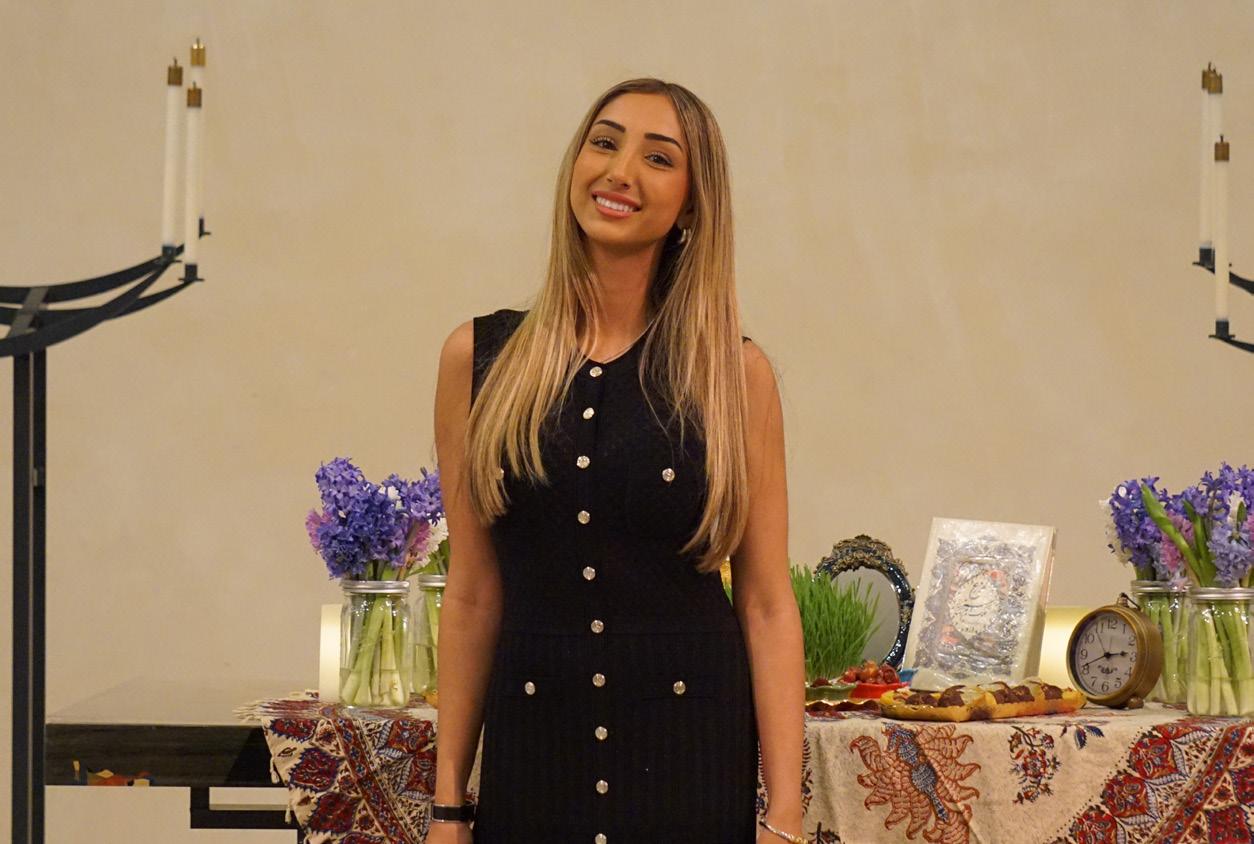
The celebration is heavily intertwined with the fashion of the holiday. Intricate styling, technical embroidery, and extensive beadings dawn each student that is present at the celebration of light and life.
Extravagance of the colors and
“We will certainly do our best to advocate for change that will bolster a more accepting and diverse campus community,” Berns said.
Amongst other cultural clubs, SASA often hosts celebrations on campus, specifically in Fish Interfaith Center. Pinks, reds and yellows embroidered coat the Fish Interfaith stage, draped in the elegant Indian fashion that has been passed down
the jewelry are a reflection of what Diwali is about- good over evil, light over darkness. The Fish Interfaith Center provides students with the opportunity to celebrate their culture, in a safe and accepting environment.
“It’s lovely to have another group of people to celebrate with. A group of Indian students at Chapman. It’s really wonderful, like family away from family,” said SASA member, computer sciecne major Kalyan Fernande.
Senior Lily Sheybani attends the annual Persian New Year event. Photo by Dylan Nichols
PhotoBySophieWehrlie
 AnjaliSolanki(Left),RoshneeMoorthy(Center), NeenaMatharuaredrappedintraditionalIndian clothesforDiwaliatChapman.
AnjaliSolanki(Left),RoshneeMoorthy(Center), NeenaMatharuaredrappedintraditionalIndian clothesforDiwaliatChapman.
Going For Chapman’s Sustainability
By Holland
In the coldest months of winter in Southern California, junior math major Ryan Joshi shivered in his Chapman Grand apartment in hopes of conserving energy.
He was on his way to winning Chapman’s 2023 Ecolympics. And a bit of cash.
“I wanted to prove something,” said Joshi.
The Office of Sustainability at Chapman hosted its second annual Ecolympics event at Chapman Grand this past fall. This competition encourages students living in Chapman housing to practice environmentally friendly habits in their daily lives. This year, the challenge for the event was to reduce energy usage.
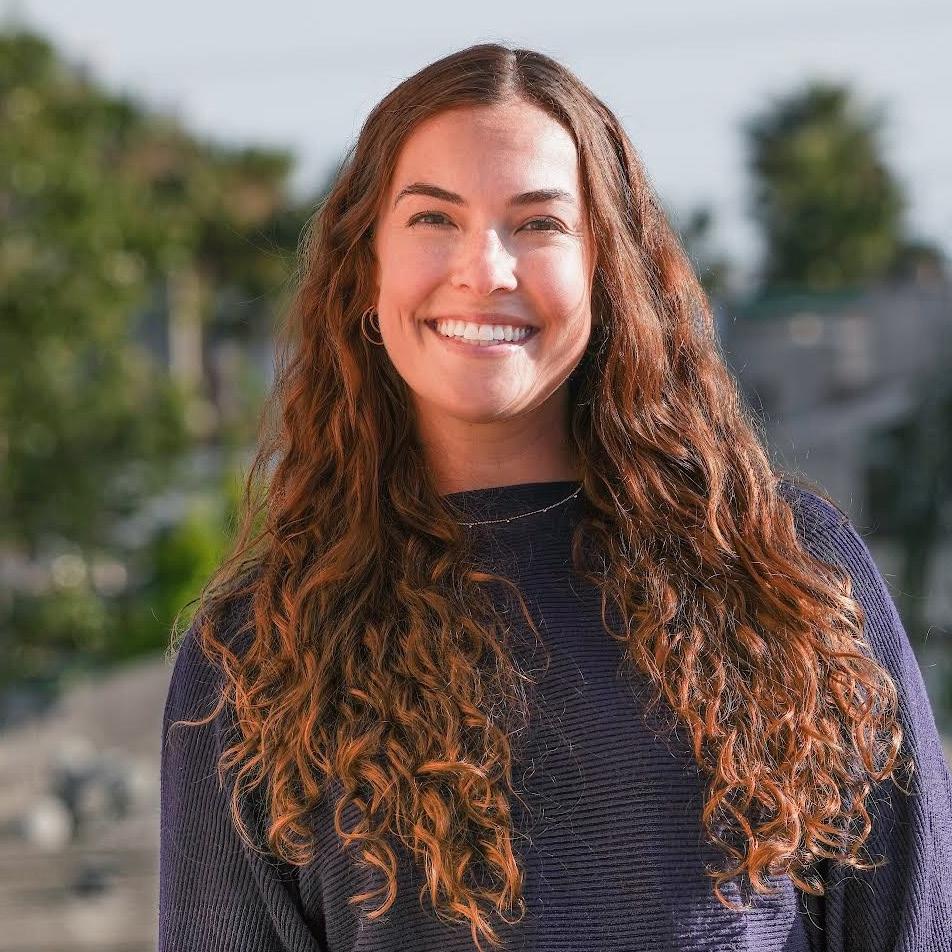
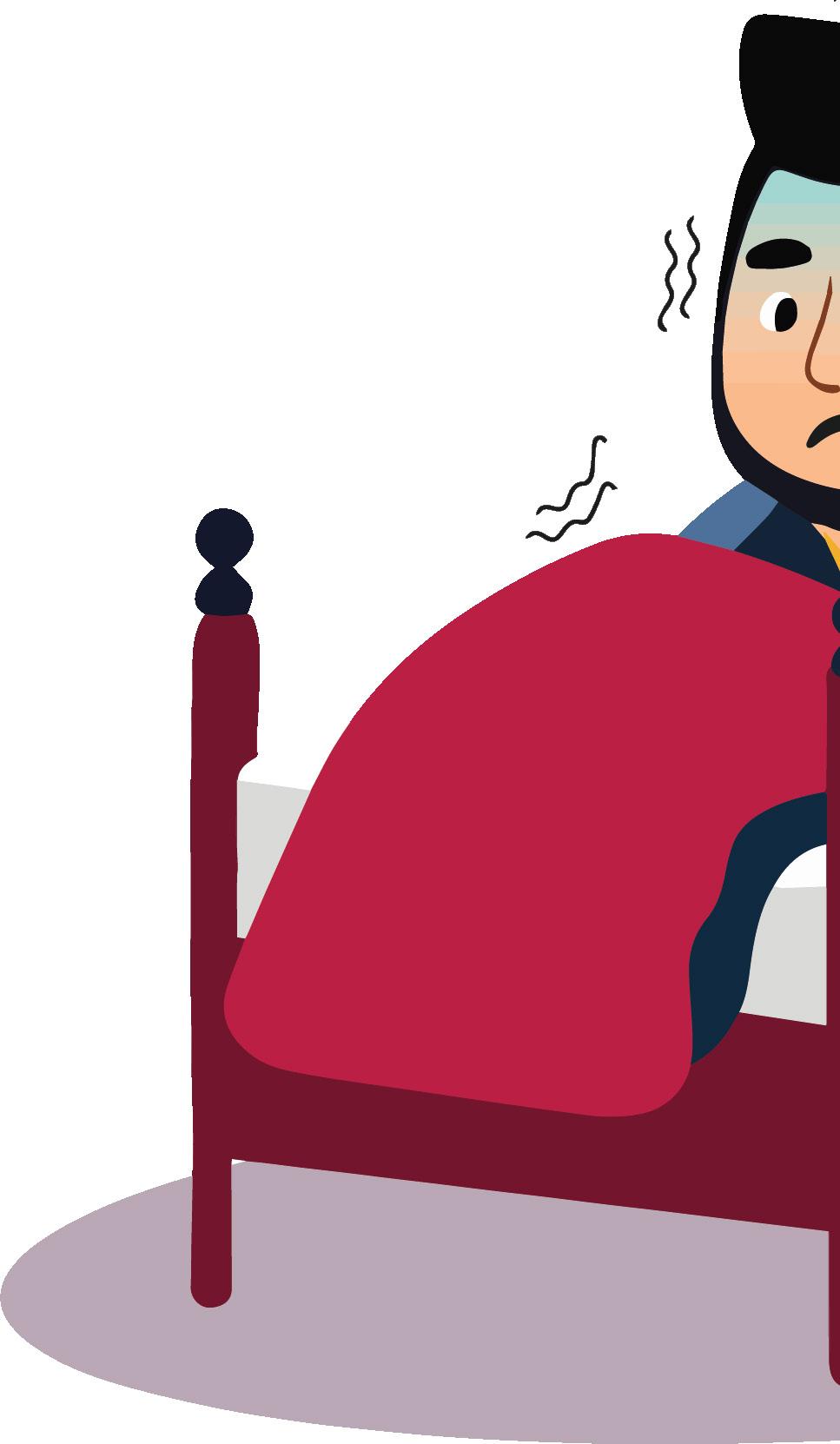
The winning floor was promised a hefty prize: $50 Amazon gift cards to every resident.
However, not every student - winner or loser - was as dedicated to the challenge
Junior Ryan Joshi cold and shivering to win the
Jenny Kaufman, Director of the Office of Sustainability. Photo courtesy of its website

For Gold Sustainability Olympics
Holland Hatch

as the Office of Sustainability may have hoped.
Some didn’t know what they missed until it was over.

“I actually didn’t even know it was happening.”
- Sophomore Nicole Kavros
“I actually didn’t even know it was happening,” said sophomore English journalism major and Ecolympics winner Nicole Kavros. Kavros admitted that even if she had known, she wouldn’t have made the effort to participate.
But she must have sustainability in her blood. She won anyway.
“When we won I was so shocked,” said Kavros. “Literally every time I leave the apartment I leave the air conditioning and the lights on.” After all, the bill wasn’t hers to pay.
Kainani Tacazon, former Office of Sustainability employee and Chapman alumni, spoke of the wastefulness of students when it comes to energy usage.
the contest. Illustration courtesy of Luke Votzke
Enthusiastic lightbulb. Graphic courtesy of Luke Votzke

“Students don’t pay any utility bills,” said Tacazon. “They can use as many resources as they want without realizing it.”
Or caring?
Jenny Kaufman, the director of the Office of Sustainability, acknowledged that for most students, living in Chapman housing is their first two years living on their own.
“This is an impressionable time to build habits for future living situations in which we aim to create many entry points to sustainability,” said Kaufman.
The Office of Sustainability provides resources year-round on environmental topics and sustainable living through newsletters and tabling on campus. The Ecolympics event is a particularly important period for outreach and education.
The Ecolympics are an opportunity to get more students involved at once through their partnership with Residence Life.
During the fall 2022 Ecolympics, when the theme was water conservation, Residence Life took to Instagram to advertise the event. This profile leveraged over 3,000 followers, about 2,000 more than the Office of Sustainability’s own Instagram.
Bust still, it doesn’t seem enough to get the students’ attention.
“Our resident advisor didn’t say anything about it ever, not even after we won,” said Kavros.
Area Coordinator of Grand, Alex Hart, also admitted the shortcomings of the partnership for this past fall’s event.
“I didnt really do anything,” Hart said.

Tacazon admitted that the Sustainability Office is so small that it’s difficult to address an entire campus with such limited resources.
Happy electrical plug. Graphic courtesy of Luke Votzke
Junior Ryan Joshi. Photo courtesy of Joshi
“The Office of Sustainability did all the work.”
Nonetheless, Chapman Grand still saw a decrease in energy consumption over the course of the fall 2023 semester. The winning second floor reduced their energy usage by 1,706 kWh. To put that into perspective, it takes about 0.5 kWh to air fry some chicken.
That’s a lot of chicken the second floor gave up to win the Ecolympics.
Chicken isn’t the sole key to reducing energy consumption. The Office of Sustainability advertises simple adjustments such as turning down the heat in the shower, shutting off the lights, and decreasing the use of heat and air conditioning as effective ways to reduce daily energy use.
“I didn’t think I would make a difference because I’m just one person,” said sophomore political science major Brandon Mahgerefteh.
The Office of Sustainability hopes to deflate this common misconception that one person’s actions don’t matter.
Clearly, a little bit of shivering from Joshi made a big impact.
“I didn’t think I would make a difference because I’m just one person.”
-SophomoreMahgereftehBrandon
Graph comparing the energy usage of various daily activities in kWh. Graphic by Holland Hatch
 Junior Talar Kazanjian thinking about future class register at Chapman.
Illustration By Alexandra Der Boghosian
By Alexandra Der Boghosian
Junior Talar Kazanjian thinking about future class register at Chapman.
Illustration By Alexandra Der Boghosian
By Alexandra Der Boghosian
Junior economics and political science student Talar Kazanjian feels her heart against her chest, sweat rolling down her neck.The walls start closing into the room. Her head is throbbing with frustration and anger.
Time to register for classes. For Kazanjian, always a headache.
“It feels like a game of chess,” she said.
Many students at Chapman find that class registration is too complicated. From adding your classes to the shopping cart to validating them, and then learning that many of the courses you want to enroll in are already waitlisted, can be frustrating. And now, there’s even more to do. You have to get a permission code just to enroll in those waitlisted courses.
This is the normal rollercoaster of emotions when trying to register for classes. Just when you think you are ready to click the enroll button, you notice the big red X marks, indicating that the class has already been filled.
The main issue here: not enough classroom space for Chapman’s growing student population.
“We do our best to accommodate students in these situations. We are still navigating the best way to make changes to make the process less complicated,” said Danielle Cobb, assistant registrar at the Office of the Registrar.
Cobb emphasized how crucial it is for students to meet with their advisors prior to their registration dates to avoid any con-
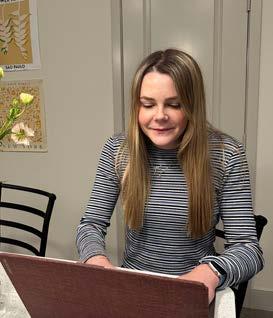
flict and confusion students have about their program evaluation and planning their courses.
“I recommend that if you meet with your advisor in person, follow up with an email in writing to make sure you and your advisor are on the same page with everything you discussed, Cobb said. “Keep it for your records so that you can review it if any issues arise,” Cobb said.
Similarly to Cobb’s advice, junior business administration student Andrew Shahinian opted to create his own to-do list to help combat the stress of class registration.
“I had a very complicated and stressful registration process during the Fall 2023 semester that really affected the start of the semester for me. I needed a permission
Junior Jessica McCrorie
Photo courtesy by Jessica McCrorie

code for one of my classes that was already filled and getting the code wasn’t easy,” Shahinian said.
In Fall 2022, Chapman welcomed 2,083 first year students and 1,808 students in Fall 2023, according to the Office of Admissions. However, as Chapman’s student population increases, class registration becomes more stressful as classes get waitlisted quickly.
“Many people I know in my program have had a complicated process when registering for classes. I always try to meet with my advisor weeks before registration, as well as plan my classes ahead of time. This allows me to ask questions on things I am confused about before my registration time,” Shahinian said.
Among Shahinian, junior communication studies, advertising, and visual journalism student Kajal Reddy Padi also shared the stresses that she experienced during her first year registering for classes at Chapman.
“When I was a freshman, it felt like there was no one to guide me,” Padi said. “I realized my registration date was scheduled late which meant all the classes I wanted to take were gone, and I was struggling to find classes because they were all taken.”
Now as a junior, the stress is still there for Padi.
“I have to take certain required classes to graduate, however I’m scared that they will be filled up,” she said. “The small class number makes it difficult for students to have a chance.”
Nevertheless, many Dodge College students don’t share the same frustrations.
Junior screenwriting major Jessica McCrorie has yet to feel the same stress that other majors feel during the registration process.
“I think the class sizes are good. Usually, the classes where we workshop scripts are no bigger than 12 students. This allows for the professor to get to know you and your writing style, and give valuable feedback,” said McCrorie.
Classes in Dodge College have a different way of being structured. They are focused much more around students’ portfolios or reading through each other’s writing pieces, whereas other majors lean more towards lecture-based classes and group discussions. Therefore, the stress during the registration process differs between majors.
Classroom sizes have the ability to influence a student’s grade, by having that quality time with professors and the content being presented. For senior screenwriting major Jordan Smaha, her experience with large lecture courses made grades play a crucial role.
“Unless it’s a class solely focused on writing, I have been in very large classes for lectures and other major-required courses.
Junior Talar Kazanjian reflects on her past class registeration experiences. Photo by Alexandra Der Boghosian
It does make it a lot more impersonal and I don’t find myself as engaged as I do in the smaller classes,” Smaha said.
Similar to Smaha’s process, Cobb also emphasizes how students must be prepared for conflicts or issues when it comes to registering for classes.
“The program evaluation is your road map to finishing your degree. Check it often! Take screenshots after you register. If something changes or there is a glitch in the system, contact our office immediately,” Cobb said.
On March 25, the Office of the Registrar released a statement regarding permission codes, which are used a lot during class registration. According to the statement, students can no longer request permission codes to get into classes if the course is already waitlisted or closed.
University Registrar Annette Casas thinks students should still sign up for the waitlist during registration, just in case a student drops the class and space becomes available. If that is the case, students on the waitlist will be immediately enrolled into the class depending on their number on the waitlist.
However, permission numbers will only be taken into consideration if the student has consent from the instructor, has not yet completed the prerequisite for the class or if the course is restricted to only specific majors and minors outside of the student’s major or minor.
“The process is ever changing,” Cobb said. The perfect registration process doesn’t exist, complications will always come up. However, it is up to students to prepare, plan ahead and reach out to advisors before their registration time.
To Do List
Before your registration date
- Meet with your advisors weeks in advance to prepare before your registration time
- Be Proactive
- Check your registration appointments
- Build your shopping chart and validate your classes
- Ask for help as soon as possible to avoid conflict
- Breathe! Trust the process.
Courtesy of the Office of Registrar
What’s The Deal With Clubs?

Cole Raber (pictured, left) has mastered several kinds of juggling to run a club at Chapman. And it’s not just him.
By Lauren Cavalieri
On a warm Friday afternoon, foam balls, clubs, and silk scarves scatter the grass near the Anderson Tennis Courts - meaning Chapman Juggling Club is in session.
One thing not there is a slackline. Club president Cole Raber wanted one but learned it would violate the school’s risk management policy.
“It’s just one of those things, where, you know, it makes sense on paper,” said Raber, a sophomore psychology major. “But it is frustrating.”
For many students, club life on campus is often hindered just by the difficulty of running one. Between bureaucratic funding, the Student Organizations team’s rules and students’ other responsibilities, club folk sometimes have difficulty developing bonds with like-minded people the way Chapman promises.
Chapman’s Student Government Association, or SGA, funds all clubs registered under Chapman’s Department of Student Engagement. To apply for funding, a club must submit an application through Chapman’s official student organization management system, Engage. The request then goes to an allocations committee for review.
organization's full Senate for a vote.
Is that bureaucratic enough for you?
According to the SGA website, the organization’s budget (which comes from the undergraduate Student Activity fee) is “utilized by student organizations, campus departments,
Rachel Berns, President of Chapman’s Student Government Association. Photo courtesy of SGA’s website
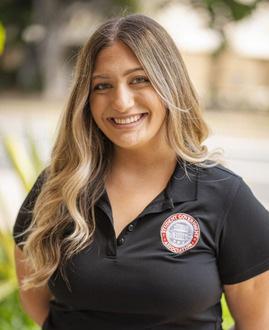
individual undergraduate students, as well as put towards campus-wide projects that aim to enrich the Chapman experience for all.”
But maybe “all” is a relative term.
Brian Guevera, president of the Basketball Club and senior English journalism major, describes SGA’s process as “restricting.”
Last September, he wanted to schedule the club’s meetings at a local 24 Hour Fitness. The gym gave him a contract asking for $1,600 for six months of reservations.
But by his account, SGA only covers reservation expenses on a per-meeting basis.
If the ask is over $1500, it goes to the
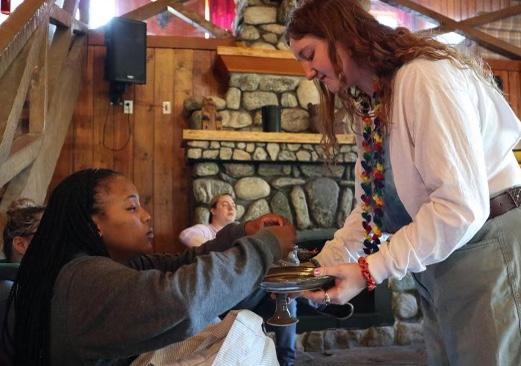
Rachel Berns was sympathetic towards students’ difficulties. “If there are institutional issues that student orgs are facing that are hindering their success, SGA can be an advocative resource for that.”
However, roadblocks clubs experience are not always limited to money. Clubs often face red tape from Student Organizations, a team that handles nonfinancial club matters such as registration, event planning, and advising student leaders.
“You just couldn’t do...a one (time) payment of $1000,” Guevara says. “Those specific rules have really hindered our ability to operate as a club.” He now pays venues out-of-pocket and charges every non-member who shows up an $8 fee as reimbursement.
Hannah Wells, a junior peace studies major and president of Disciples on Campus, recalls SGA’s former policy for printing club T-shirts. Today, they are free and SGA reimburses their production costs in full. But at one point, she had to sell them to members. SGA collected the money and returned only the profit.
“I think the policy has changed because of student protests,” she says. “None of us really liked it.”
When it comes to finances, SGA President
Sabrina Vallderuten, a junior business administration major and president of Chapman Animal Care and Volunteer Club, has had problems hosting bake sales to raise money for local animal shelters.
“I think the policy has changed because of student protests. None of us really liked it.”
- Junior Hannah Wells
Why’s that? If a club has a bake sale on campus - the easiest way to get students’ attention - they have two options per Student Org policy. They can collaborate with Sodexo, Chapman’s official catering company, or get pre-approved to arrange plans with a different caterer.
Hannah Wells (right) was hesitant to charge members of Disciples on Campus for T-shirts.
Photo courtesy of Wells
“(SGA is) pretty open and upfront about everything, but it’s still a lot to manage, a lot to keep on top of.”
- Junior Matt Onufrak
In that case, they can only buy pre-packaged items for under $250 total, tax included.
“That’s kind of a difficulty that we just work around,” Vallderuten said.
Berns notes, however, that these rules and regulations are there for good reason.
“I do imagine they are implemented by the University based on matters pertaining to law liabilities, safety, risk management, and beyond,” she said.
Even when clubs don’t run into specific issues, however, they still struggle to make sure they have everything in check.
Matt Onufrak, junior TV and production major and vice president of sketch comedy troupe Father’s Milk, said, “We have to talk to SGA, get everything approved, go through all the processes…they’re pretty open and upfront about everything, but it’s still a lot to manage, a lot to keep on top of.”
Problems are not limited to Chapman administration alone. College students have countless responsibilities, and often extracurriculars can fall down the priority ladder.
Emma Kotler, a junior creative writing major, got caught on the other side of that phenomenon. She joined the Sociology Club near the end of her freshman year to “branch out and expand” socially, but nothing came of it.
“I would get emails from them, but they would never meet,” Kotler says. “It was just kind of annoying.”
 Emma Kotler was dissapointed that the Sociology Club rarely met in person her freshman year. Photo courtesy of Kotler
Emma Kotler was dissapointed that the Sociology Club rarely met in person her freshman year. Photo courtesy of Kotler
Or take the Triathlon Club. Ben Alvarado, a junior directing major, remembers joining it at last semester’s involvement fair. He said the sign-up form had a “long list” of names and the president claimed they’d compete in a real triathlon.
But, again, that never happened.
“I was like okay, dope. And then I never heard anything back,” he said.
Even though money doesn’t directly influence these scenarios, it can be a big motivator. The Diversity and Cultural Clubs are both well-funded and known for their thriving communities despite their member’s busy lives.
Velez, they have board meetings on Sundays, tabling on Wednesdays, general meetings on Thursdays, and off-campus outings every other weekend.
APSA also hosts a festival every spring called APIDA that costs roughly $14,000.
While SGA provided some of that, APSA didn’t have to rely solely on them like other clubs. The Cross Cultural Center helps fund Diversity and Cultural clubs.

APIDA’s co-chair, senior business major Jessica Miyasato, also points out APSA offers camaraderie you might not get through basketball or sociology.
The Asian Pacific Student Association, or APSA, keeps in constant contact.
According to their co-president Reese
“A cultural club tr(ies) to provide a feeling of home for students of color, or students not from America,” the senior business major mentioned.
Chapman APSA during a meeting in Feb. 2024.
Photo courtesy of Chapman APSA’s Instagram
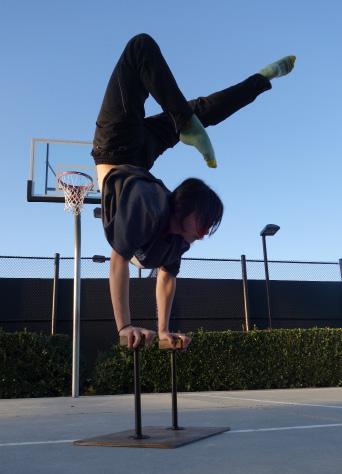
But certainly not every Chapman club is either Triathlon or APSA.
Many are somewhere in between, like the Juggling Club. They meet Fridays at 4 p.m., and by 4:45, almost everyone is already gone.
But many students like this casual atmosphere, such as Arisa Trombley. The senior computer science major is a talented acrobat who uses the meetings to prac tice handstands and tricks.
Arisa Trombley likes Juggling Club because it gives her a break between long coding assignments, but admits the organization has had its issues. Photo by Lauren Cavalieri
juggling for an hour,” she said.
But once again, money talks - and helps clubs stay active.
“I remember last semester we didn’t get as much funding from SGA and stuff for clubs, and this year it’s a lot better,” Trombley recalled.
With that funding, the club is planning its first official show and is scouting student performers.
Even with all the roadblocks, it helps for passionate students to remember why they love clubs to begin with.
“In college, I don’t really have the time to be doing the things I used to be doing,” said Trombley. “It’s like a way for me to keep in touch with that side of me.”
“It’s like a perfect break between my coding assignments and stuff. I’ll just be coding for hours on end and then I’ll just go
By Dylan Nichols and Nicole Kavros

A popular weekend activity for students is going to every student can participate. Graphic by
There are days when Kiana Kalahele has to choose between buying groceries for the week or hanging out with her peers.
While all students have found a way to pay the university’s fees, many students can’t keep up with the costs of a Chapman social life.
The school doesn’t offer financial aid for going out with friends.
“It can feel a little belittling when my friends say, ‘Let’s go out and eat at Thai Towne’ or something in the Circle,” said Kalahele. “I’m like, ‘I’m gonna pass, I’m gonna go eat a piece of bread and cheese at home for my dinner.’”

And for some students, the impact of a private school campus doesn’t land until they actually walk through the gates.
“People are buying coffee every day. And I have to only buy coffee maybe once a week to be able to pay for essentials.”
-Senior Kiana Kalahele
Everyone knows that Chapman is an expensive private school — with tuition costing $87,730 a semester, including housing. But what many students don’t consider is how wealth disparity among students affects social standings among peers.
“People are buying coffee every day. And I have to only buy coffee maybe once a week to be able to pay for essentials,” Kalahele continued.
A bite to eat in the Circle can mean having to pick up an extra shift at work or skipping out on buying groceries for the week.
Third-year Nick Rodriguez also feels a disparity in what he can afford compared to what other students are spending.
“I see people driving around in very nice cars and wearing very nice clothes,” said Rodriguez. “And I see lifestyles where it seems like they don’t really have to worry about
to Los Angeles... but not by Easton Clark
Kiana Kalahele feels that Chapman’s social culture can be too expensive. Photo by Kalahele

anything financially, and they kind of just are able to spend their parents’ credit card.”
While a lot of students come from money, not all of them do. Over half of the student population is benefitting from an average financial aid package of $45,515 — just over half the price of tuition.
That means that more than half of Chapman students aren’t in the class who can afford brunch in the Circle every weekend.
Sophomore health science major Emily Tapay is a resident advisor at Chapman. She says that this, along with her scholarship, help her pay the basic costs of the school.
“A lot of students come from wealthier families, so they get that financial support from their parents — which not everybody has,” she said. “Which makes it harder for those students to go out with their friends as much. Like, I went to the caf for lunch with my free meal plan.”
Dean of Students Jerry Price has
seen how differences in economic backgrounds can impact how students settle into their Chapman life.
“It usually happens a couple of weeks [into school], students are like, ‘I’m kind of tired of caf food. Let’s go down and have dinner at Citrus City [Grille].’ That’s when [students] realize, oh, I can’t do that,” said Price. “And so these connections that are starting to form have this complication that some people can do it, and some can’t.”
Price doesn’t blame the students with money. But he does point out where compromises could be made.
“I do hope that part of their experience would be, ‘You know what, there’s some people I really like and care about, [that I] like spending time with, who can’t go to those places, so we should find something else,’” said Price.
It’s not a crime to be rich. It’s not the students’ fault if their parents have money. But there are ways to make sure that wealth doesn’t become a social hurdle for people trying to make friends.
Coming from a Senior Nick Rodriguez is another student who feels the effects of wealth disparity among students. Photo by Dylan
 Nichols
The Chapman parking lots are full of expensive cars owned by students. Photo by Dylan Nichols
Nichols
The Chapman parking lots are full of expensive cars owned by students. Photo by Dylan Nichols

family that became wealthy only later on in his life, junior creative producing major Michael Rosario tries to be conscious of the financial situations of those around him.
“I definitely have a different perspective on things and how to go about things to make sure everyone feels included,” said Rosario. “I always try to make sure everyone’s a bit

“I see lifestyles where it seems like they don’t really have to worry about anything financially, and they kind of just are able to spend their parents’ credit card.”
-Junior Nick Rodriguez
more comfortable when it comes to these things.”
Kalahele knows that if she’s with her close friends, they’ll understand her situation. It’s not expected for her to be able to eat out every time they want to see each other.
On the other hand, with so many expensive food options available right next door, it’s hard to find an alternative hangout activity. And not every student is so cognizant of the wealth disparity.
“With people I don’t know that well who want to hang and go out for dinner, I’ll say I’m sick so I don’t have to go, instead of telling them, ‘I can’t go because I can’t afford it,’” said Kalahele.
What might seem like a small decision to some — what restaurant to try, where to spend a Saturday evening — can set a precedent for four years of social isolation. The feeling is there, whether it’s intentional or not.
“There is rich culture here on campus; it isn’t talked about a lot, but it’s here,” said Kalahele.
Pricey restaurants like The Filling Station occupy most of The Circle.
Photo by Nicole Kavros
Chapman Magazine Mavericks: Student Voices on Fire!
By Kiana Tanizaki-Hudson
Always a fan of the free-flowing magazine Fever Dream Zine, Sarah Hart, a sophomore dance and journalism major, knew that’s something she wanted to be a part of.
And she finally got that shot.
“I’ve always been interested in the arts, so getting to write about something I love allows me to share something I’m passionate about and have fun,” said Hart.
Hart isn’t the only one who enjoys expressing themselves through writing. A “zine”,

like a magazine, is a shorter and self-published piece of work. Chapman has an eclectic community of magazines, which gives students an outlet to write about what interests them. These publications put their names on the map to possible job opportunities and experiences.
Chapman’s students provide their own number of platforms for aspiring writers and publishers to showcase their work and engage with a diverse audience interested in literature and the publishing industry.
Here is a look at four of the publications:

1. Fever Dream Zine
Hart gained an interest in “zine writing” during quarantine. She started reading Gen Z publications to feel connected to people who are going through the same thing and have similar interests.
“I applied a few times to a couple zines, but it wasn’t until Chapman that I made connections with Angie.”
That would be Angie Mitilian, sophomore, co-founder, and editor-in-chief at Fever Dream Zine. The Dodge College senior urged Hart to write for the online publication.
“I got a lot of opportunities to work with a lot of artists at press conferences, learning so much. It just gives me an edge and opportunity to get my name out there,” said Hart.
Their journey is characterized by a commitment to innovation and diversity, with students actively embracing new perspectives in whatever they are interested in to push the boundaries of traditional publishing.
Hart wrote about rising artists like Leith Ross on his American Tour.
2. The Rage Magazine

Sophie Wehrlie, a Chapman Junior, runs “The Rage Magazine” an online fashion magazine started less than a year ago. It highlights a diverse and rich variety of styles and fashions at Chapman and the OC area.
“I started it because there were surprisingly no fashion magazines on campus, and it was a medium I knew I wanted to explore,” said Wehrlie.
The magazine boasts a rich tapestry of student contributions, each injecting their own ideas into the pages. This collective effort infuses the publication with a distinctive Gen-Z coding, capturing the spirit of the current generation.
Photo courtsey of Fever Dream Zine
Photo courtsey of The Rage Magazine
The Rage’s latest issue contained advice on gender conforming plus size fashion and overcoming awkwardness in college.

One of the 2023 Issues of The Rage Magazine. Photo courtsey of The Rage Magazine’s Instagram
3. Ouroboros
Join-May Silvers the Editor in Chief for Ouroboros shared how the magazine aims to provide an outlet for artists to push the boundaries of imagination.
“Because sometimes it takes a moment from another world to better understand our own,” said Silvers
The magazine is filled with horror, fantasy, paranormal, science fiction, and magic. Fish Young, a sophomore, Design Editor for Ouroboros, and writer for Calliope, another Chapman magazine, was so excited to see a science fiction medium on campus.
“Ouroboros is a relatively young publication at Chapman but it is definitely developing. and now developing to make a podcast to have more modes of publication inside and outside of Chapman.” said Young. One Ouroboros author wrote a graphic poem about death and love, titled “The Crow Who Took My Bones”

Ouroboros is a student-run Chapman magazine that is home to creative expression and imagination. According to the magazine, the ouroboros is an otherworldly serpentine creature that is depicted across several ancient mythologies and showcases that beginnings and endings are inextricably intertwined.

Ouroboros’ December 2023 issue cover. Photo courtsey of Ouroboros’ website
Photo courtsey of Ouroboros
4. Calliope
Calliope is the oldest Chapman magazine that has been around for decades. Tyler Edwards, the editor- in- chief for Calliope, expressed how immersing oneself in someone’s artwork is an invitation, guided by a hand in a place that they never knew existed.
“Each work of art, poetry, and fiction in the issue provides something new to experience. It invites you to connect.”
All editing is done by students. Young said, “It ensures the school a voice. Chapman’s voice. Guided by Chapman students where we can amplify ourselves.”
John Nielsen, a journalism professor and faculty advisor to The Panther, expressed how it’s not easy making a living as a writer today. He shared how getting published while in college definitely makes it easier to land that first job when you head into the real world.
“Writing is a superpower. Students who learn how to tell a story powerfully in college are more likely to succeed professionally, no matter the career. Some people may try to tell you otherwise. Those people are fools.” said Nielsen.


John Neilsen expressed his thoughts and personal experience about getting published as a student.
“It’s not an easy thing to make a living as a writer. That was true when I set out to be a journalist, and it’s even truer today. But it can be done. Getting published while you are in college definitely makes it easier to land that first job when you head into the ‘real world.’ Getting published constantly is even better. Forty years ago, an ink-stained editor at The LA Times put it this way when I asked him for advice: ‘The secret’s simple, kid. The secret is to relentlessness. The secret is to keep those stories coming through the transom with terrifying regularity.’”
Professor John Nielsen shares some insight how publishing in college can help writers in the future. Photo courtsey of John Nielsen
Young expressed “Our magazines aren’t just publications; they’re revolutions in print, showcased on worldwide platforms, amplifying our voices and visions to the world.”
Calliope’s Fall 2023 issue cover. Photo courtsey of Calliope’s Website
Support for Struggle or Mixed Reviews on Chapman’s
By Holland Hatch and
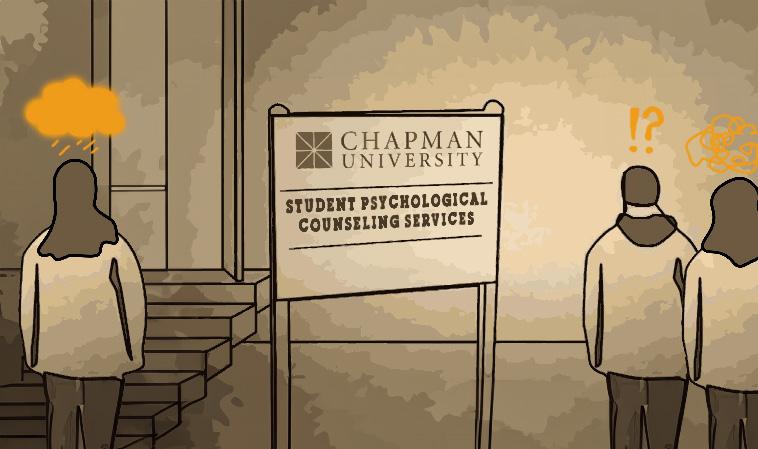
Students waiting outside Chapman Psychological Services Office. Graphic courtesy of Chapman Psychological Services
At the most difficult time in his life, Brian Guevara reached out to Chapman’s Student Psychological Counseling Services.
Someone from its staff responded promptly, providing an entry survey and saying the office would get back to him soon to match him with a therapist.
And then: silence.
“I never heard from them again,” said Guevara, a senior English journalism major.
But here may be the crux of the problem: Too many students, not enough counseling staff.
Chapman’s Student Psychological Counseling Services, located across Glassell Street from the main campus, offers assistance for students’ mental well-being. Both with
or Struggle for Support Chapman’s Psychological Services
and Lauren Cavalieri

counseling and therapy sessions.
Every semester the staff sees between 650 and 800 students, a high demand for a small office staff. With limited resources, not every student receives the attention they need.
Andrew Kami, the director of the services, is aware of the disappointments of some students. The office has experienced much development since he joined in 2019 shortly before the COVID-19 pandemic.
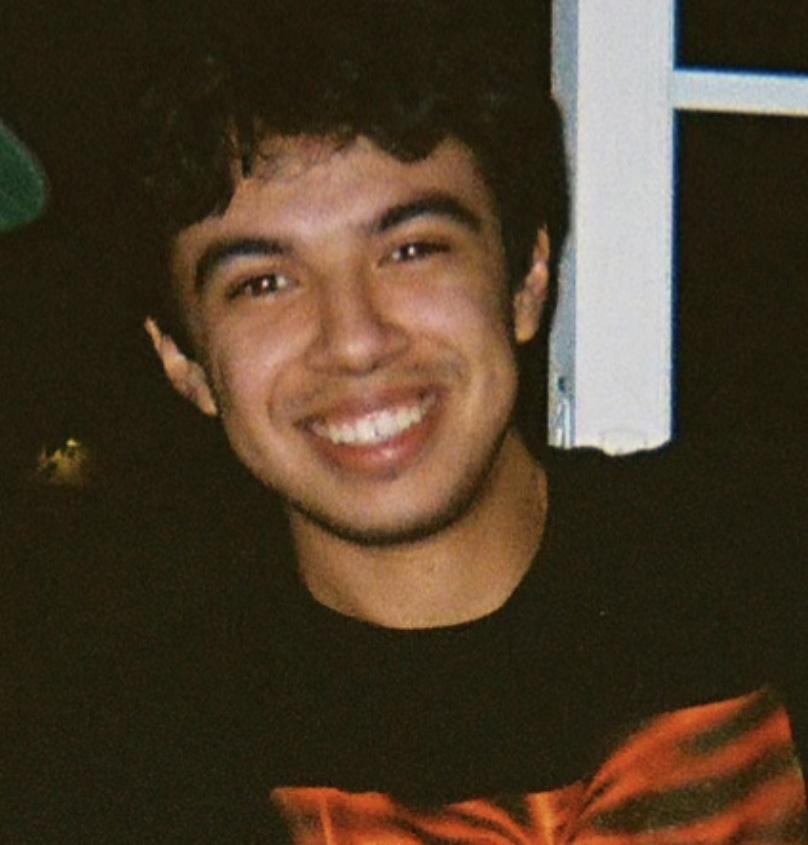
“We’ve made a lot of changes since I’ve been here,” said Kami.
Over the past three years, despite an increase in student demand,
the average waiting time for students on the waiting list has dropped from 22 days to just over five.
Still, not every student is happy with the services. But it is this negative feedback that Kami wants to hear.
“Tell me how I can make it better,” said Kami.
Kami addressed that 80% of 122 respondents on the psychological services feedback survey strongly agreed that their experience had been positive. However, these responses only reflect a fraction of the total number of students that utilize the services every year.
Meredith Heika, a Chapman alumni, got the help of the services in 2019, but felt disappointed in the lack of help her therapist provided her.
“I didn’t like the therapist at all. I was uncomfortable going to her,” she said.
The therapist recommended her to a psychologist on campus who prescribed her Lexapro.
The psychologist and prescription helped,
Services
Senior Brian Guevara. Photo courtesy of Guevara

but the earlier experience still stuck with her.
“It felt like I was a burden and she didn’t want me there at all.”
Lillian Holmberg, a sophomore biological sciences major, was similarly disappointed with her therapist.
After bringing up a practical request, according to Holmberg, her therapist became angry with her.
During this interaction, Holmberg had to raise her voice to put her therapist “into line.”
“You should never have to do that with somebody that’s in a higher power,” said Holmberg.
The psychological services office hosts a staff of 10 in addition to eight graduate students that are supervised clinicians. Students can walk into the office or reach out through their website to request help. After completing an entry survey, students are paired with one of these therapists or
clinicians for counseling. Counseling is provided through the end of each semester. Every semester, students must repeat the entry process to continue using the services.
The shortening turnaround time to match students with the help they need has been very beneficial for some.
Arjun Rao, a junior data science major, started therapy through the service this past fall. He falls under the majority of students who received help within two weeks of his initial survey from the office.
“For me, I feel like it’s been perfect,” said Rao.
Rao was paired with a therapist he continues to meet with regularly.
Shandon Obregon, a junior political science major, also had a positive experience with the counseling services, but recognized he has peers with opposing viewpoints.
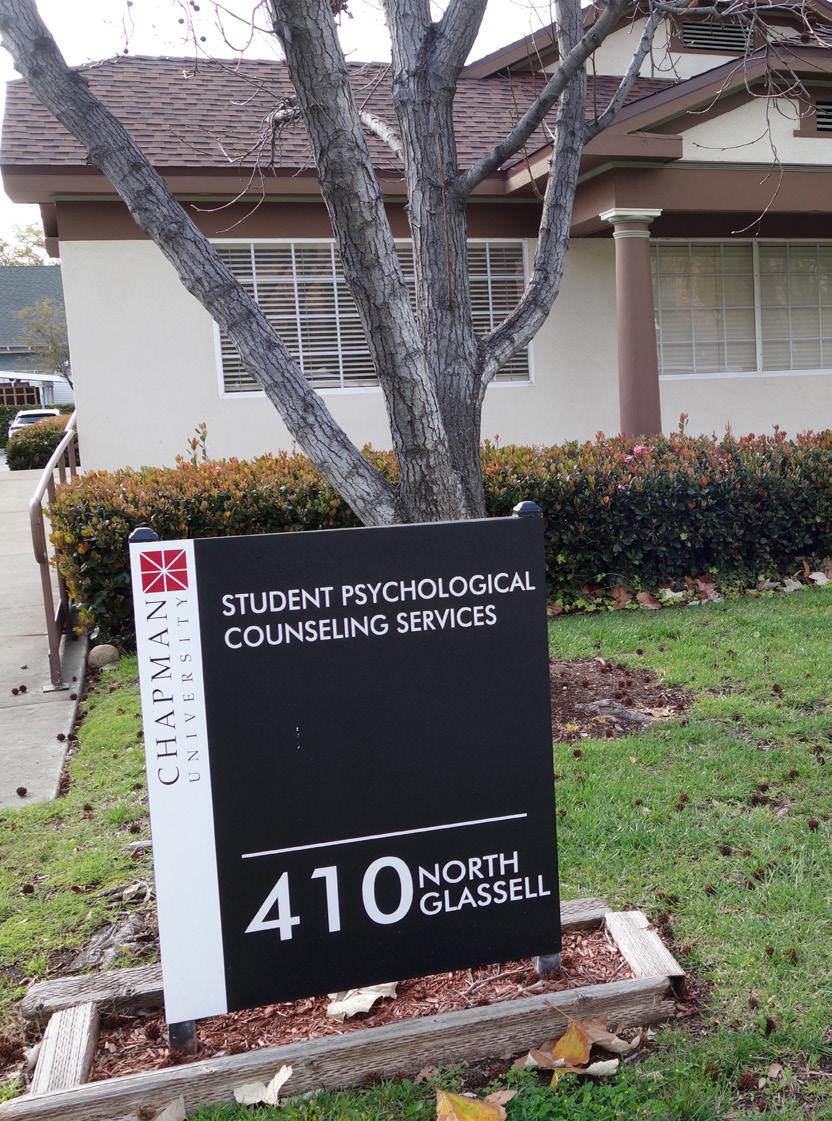
“I felt kind of crazy that I had a good time,”
Chapman Student Pyschological Counseling
Andrew Kami, Director of the Psychological Services. Photo courtesy of its website
said Obregon.
The services continue to have their limitations in what they can do and provide for students.
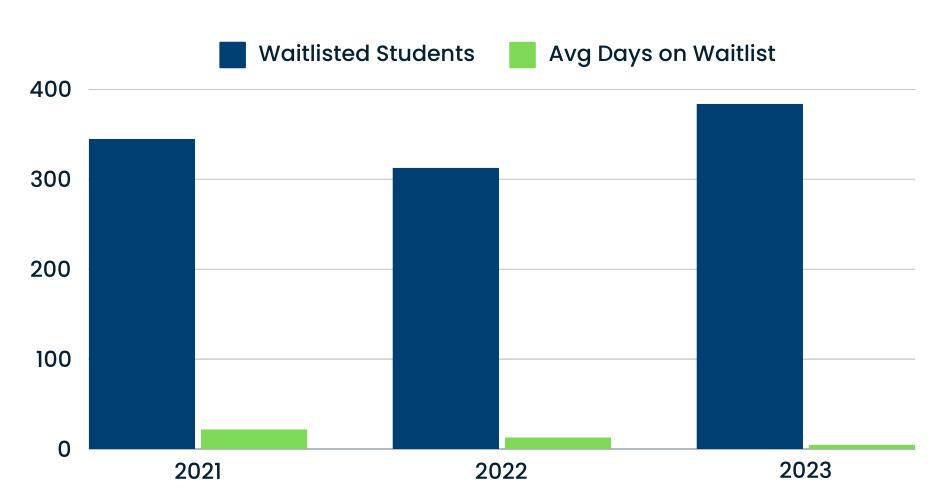
This became apparent to Marjorie Stemmler, a senior English journalism major. When she admitted the severity of her feelings to her therapist, she was directed to seek help from someone outside of Chapman.

“I feel like they can only do so much,” said Stemmler.
For safety reasons, the services are restricted in the cases they can handle. For this reason, some students are sent to outpatient treatment.
“There are certain things we shouldn’t manage,” said Kami.
Kami said that the psychological services are doing the best that they can with the resources they have.
Guevara never had the opportunity to meet with a therapist from the services. In fact, even after several professors reached out to the services on his behalf, he received no response.
Guevara was instead assisted directly by the Dean of Students Staff at the Office of Student Affairs, the office the services operate under.
Guevara’s final review: “It was the lowest point of my life and they just weren’t there for me.”
Kami knows the services have not been perfect, and never will be for everyone, but they can continue to strive for it.
“Not every restaurant has five stars,” said Kami.
Counseling
Services Office. Photo by Lauren Cavalieri
Graph of the services waitlist from 2021-2023. Graphic by Holland Hatch


 By. Brian Guevara
By. Brian Guevara

 By. Nicole Kavros
By. Sophie Wehrlie
By. Allie Leichter
By. Nicole Kavros
By. Sophie Wehrlie
By. Allie Leichter










 Chapman Professor Matthew Goldman shares some insight on protest rhetoric. Photo courtresy of Matthew Goldman’s website
Chapman Professor Matthew Goldman shares some insight on protest rhetoric. Photo courtresy of Matthew Goldman’s website







 An array of edibles purchased from Blüm, a weed dispensary, in Santa Ana. Photo by Kiana Kalahele
An array of edibles purchased from Blüm, a weed dispensary, in Santa Ana. Photo by Kiana Kalahele






 By Brian Guevara
Illustration by Brian Guevara
By Brian Guevara
Illustration by Brian Guevara







 Illustration by Sarah Hart
By Sarah Hart
Illustration by Sarah Hart
By Sarah Hart











 By Makenna Kunimura
Photo by Kade McKenna
By Makenna Kunimura
Photo by Kade McKenna









 Rodney Reed Sodexo spokesman.
Rodney Reed Sodexo spokesman.


 Illustration of student stressed from Study Abroad classes.
Photo courtesy of Aixian Wiriadinata.
Illustration of student stressed from Study Abroad classes.
Photo courtesy of Aixian Wiriadinata.


















 At a line dancing club, perfect strangers turn to dance partners.
Photo by Nicole Kavros
Chapman student Emma Gould loves to dance with her friends. Photo by Nicole Kavros
Brian Guevara is not a line dancer. But he still loves to go to line dancing clubs. Photo by Brian Guevara
At a line dancing club, perfect strangers turn to dance partners.
Photo by Nicole Kavros
Chapman student Emma Gould loves to dance with her friends. Photo by Nicole Kavros
Brian Guevara is not a line dancer. But he still loves to go to line dancing clubs. Photo by Brian Guevara


 Many line dancing clubs also offer bars for customers over 21. Photo by Nicole Kavros
Chapman students (from left) Emma Farris, Kathryn Treat, Caroline Maltz, and Matthew Becker damce and sing to music off the dance floor at InCahoots. Photo by Nicole Kavros
Many line dancing clubs also offer bars for customers over 21. Photo by Nicole Kavros
Chapman students (from left) Emma Farris, Kathryn Treat, Caroline Maltz, and Matthew Becker damce and sing to music off the dance floor at InCahoots. Photo by Nicole Kavros







 Photos Courtesy of The Collective Instagram
Photos Courtesy of The Collective Instagram










 Juniors Tahsis Fairley, Sophia Alloggiamento, and Ali Flynn (from left) enjoy the music in Joshua Tree last May.
Seniors Franco Picache (front) and Zohar Varadi (back left) dance to Chapman DJ mixes in Joshua Tree last May.
Juniors Tahsis Fairley, Sophia Alloggiamento, and Ali Flynn (from left) enjoy the music in Joshua Tree last May.
Seniors Franco Picache (front) and Zohar Varadi (back left) dance to Chapman DJ mixes in Joshua Tree last May.



 AnjaliSolanki(Left),RoshneeMoorthy(Center), NeenaMatharuaredrappedintraditionalIndian clothesforDiwaliatChapman.
AnjaliSolanki(Left),RoshneeMoorthy(Center), NeenaMatharuaredrappedintraditionalIndian clothesforDiwaliatChapman.







 Junior Talar Kazanjian thinking about future class register at Chapman.
Illustration By Alexandra Der Boghosian
By Alexandra Der Boghosian
Junior Talar Kazanjian thinking about future class register at Chapman.
Illustration By Alexandra Der Boghosian
By Alexandra Der Boghosian





 Emma Kotler was dissapointed that the Sociology Club rarely met in person her freshman year. Photo courtesy of Kotler
Emma Kotler was dissapointed that the Sociology Club rarely met in person her freshman year. Photo courtesy of Kotler





 Nichols
The Chapman parking lots are full of expensive cars owned by students. Photo by Dylan Nichols
Nichols
The Chapman parking lots are full of expensive cars owned by students. Photo by Dylan Nichols
















